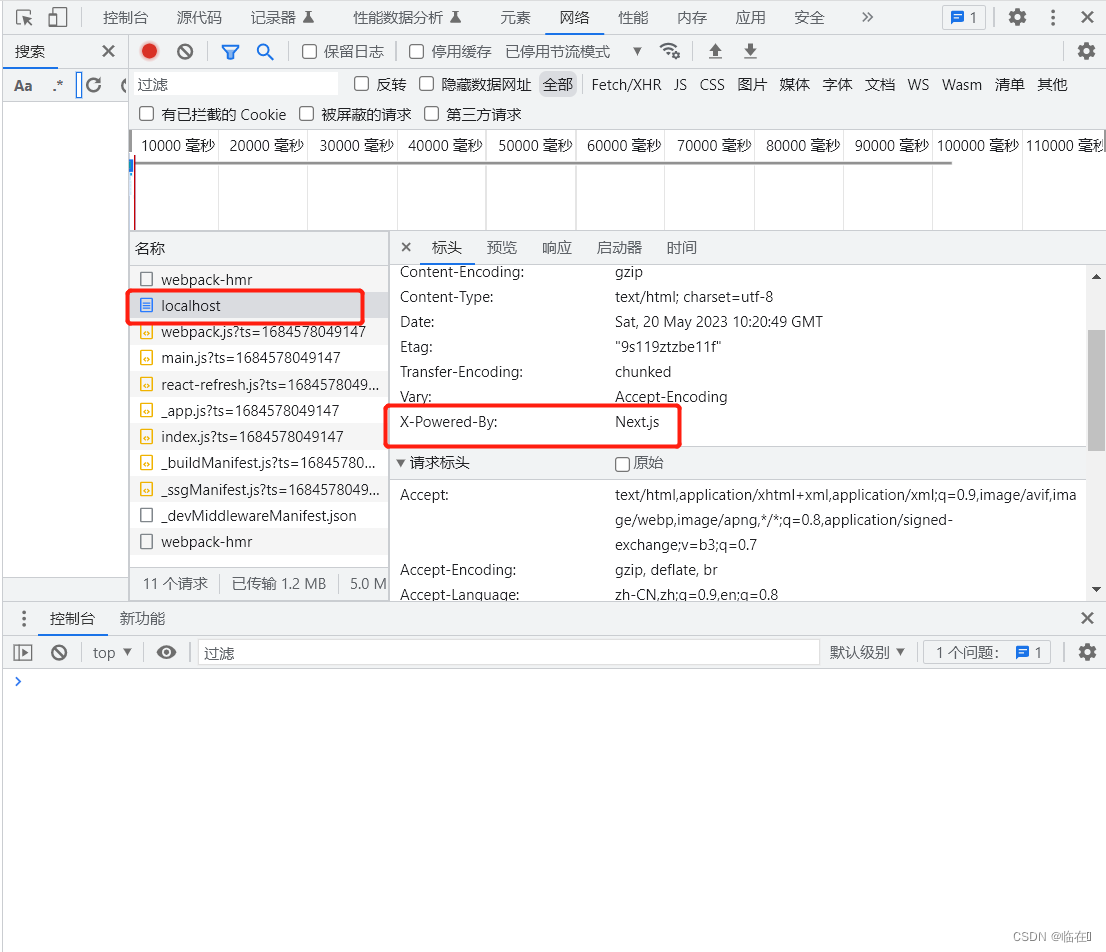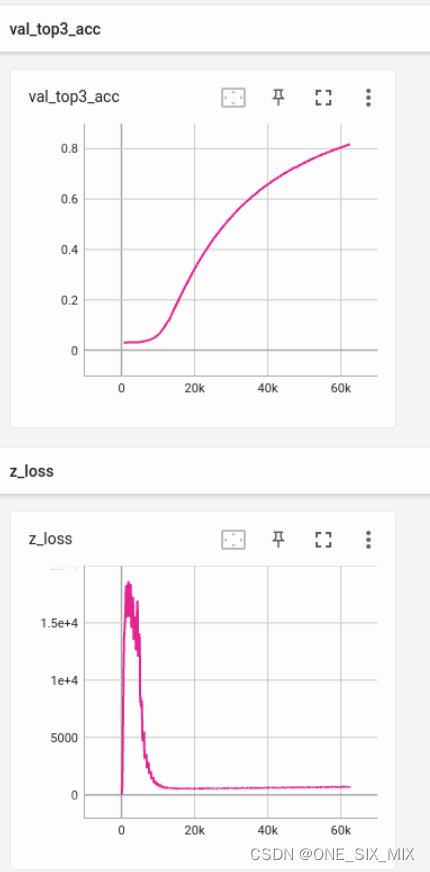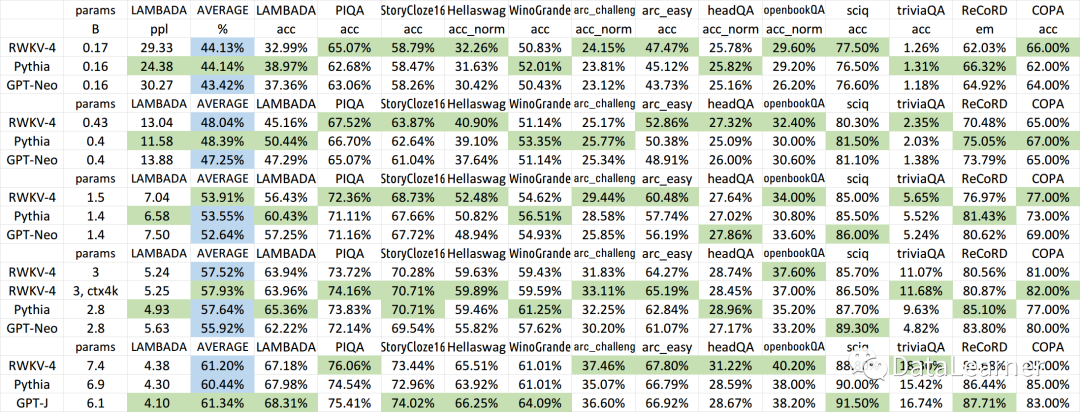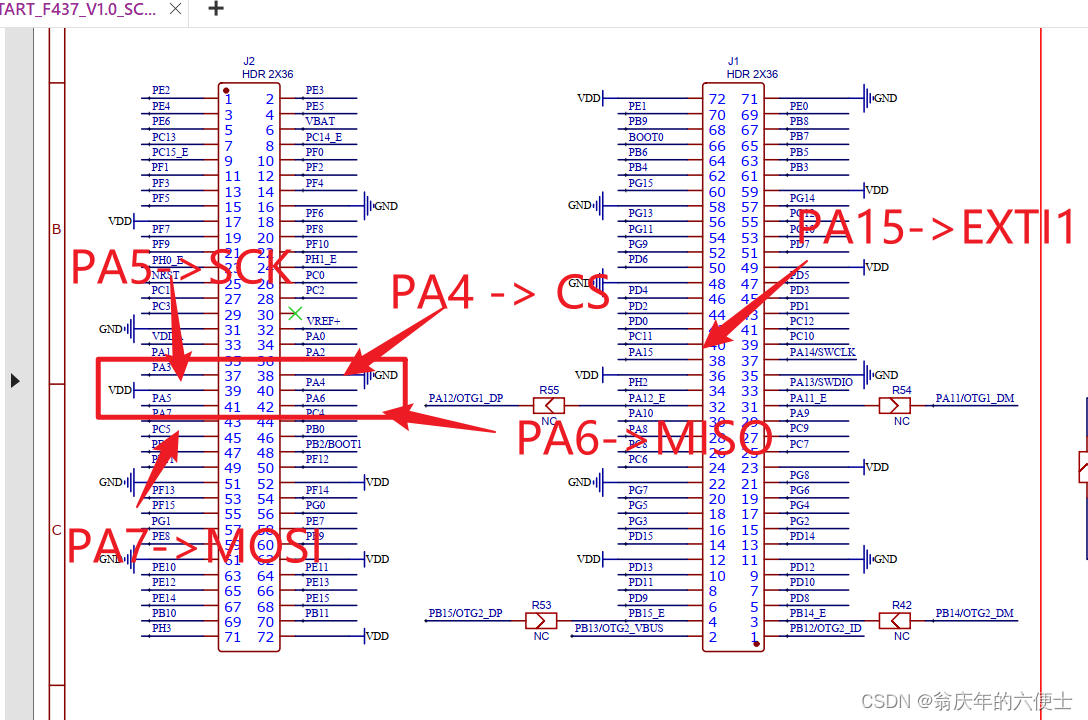文章目录
- 数组
- 概述
- 动态数组
- 二维数组
- 局部性原理
- 越界检查
- 链表
- 概述
- 单向链表
- 单向链表(带哨兵)
- 双向链表(带哨兵)
- 环形链表(带哨兵)
- 队列
- 概述
- 链表实现
- 环形数组实现
- 栈
- 概述
- 链表实现
- 数组实现
- 应用
- 双端队列
- 概述
- 链表实现
- 数组实现
- 优先级队列
- 无序数组实现
- 有序数组实现
- 堆实现
- 阻塞队列
- 单锁实现
- 双锁实现
- 堆
- 二叉树
- 存储
- 遍历
- 广度优先
- 深度优先
- 递归实现
- 非递归实现
参考课程: https://www.bilibili.com/video/BV1Lv4y1e7HL/?share_source=copy_web&vd_source=4edb1fc2a124166c9f72a5feababcb2a
数组
概述
定义
在计算机科学中,数组是由一组元素(值或变量)组成的数据结构,每个元素有至少一个索引或键来标识
In computer science, an array is a data structure consisting of a collection of elements (values or variables), each identified by at least one array index or key
因为数组内的元素是连续存储的,所以数组中元素的地址,可以通过其索引计算出来,例如:
int[] array = {1,2,3,4,5}
知道了数组的数据起始地址 B a s e A d d r e s s BaseAddress BaseAddress,就可以由公式 B a s e A d d r e s s + i ∗ s i z e BaseAddress + i * size BaseAddress+i∗size 计算出索引 i i i 元素的地址
- i i i 即索引,在 Java、C 等语言都是从 0 开始
- s i z e size size 是每个元素占用字节,例如 i n t int int 占 4 4 4, d o u b l e double double 占 8 8 8
小测试
byte[] array = {1,2,3,4,5}
已知 array 的数据的起始地址是 0x7138f94c8,那么元素 3 的地址是什么?
答:0x7138f94c8 + 2 * 1 = 0x7138f94ca
空间占用
Java 中数组结构为
- 8 字节 markword
- 4 字节 class 指针(压缩 class 指针的情况)
- 4 字节 数组大小(决定了数组最大容量是 2 32 2^{32} 232)
- 数组元素 + 对齐字节(java 中所有对象大小都是 8 字节的整数倍,不足的要用对齐字节补足)
例如
int[] array = {1, 2, 3, 4, 5};
的大小为 40 个字节,组成如下
8 + 4 + 4 + 5*4 + 4(alignment)
随机访问性能
即根据索引查找元素,时间复杂度是 O ( 1 ) O(1) O(1)
动态数组
java 版本
public class DynamicArray implements Iterable<Integer> {
private int size = 0; // 逻辑大小
private int capacity = 8; // 容量
private int[] array = {};
/**
* 向最后位置 [size] 添加元素
*
* @param element 待添加元素
*/
public void addLast(int element) {
add(size, element);
}
/**
* 向 [0 .. size] 位置添加元素
*
* @param index 索引位置
* @param element 待添加元素
*/
public void add(int index, int element) {
checkAndGrow();
// 添加逻辑
if (index >= 0 && index < size) {
// 向后挪动, 空出待插入位置
System.arraycopy(array, index,
array, index + 1, size - index);
}
array[index] = element;
size++;
}
private void checkAndGrow() {
// 容量检查
if (size == 0) {
array = new int[capacity];
} else if (size == capacity) {
// 进行扩容, 1.5 1.618 2
capacity += capacity >> 1;
int[] newArray = new int[capacity];
System.arraycopy(array, 0,
newArray, 0, size);
array = newArray;
}
}
/**
* 从 [0 .. size) 范围删除元素
*
* @param index 索引位置
* @return 被删除元素
*/
public int remove(int index) { // [0..size)
int removed = array[index];
if (index < size - 1) {
// 向前挪动
System.arraycopy(array, index + 1,
array, index, size - index - 1);
}
size--;
return removed;
}
/**
* 查询元素
*
* @param index 索引位置, 在 [0..size) 区间内
* @return 该索引位置的元素
*/
public int get(int index) {
return array[index];
}
/**
* 遍历方法1
*
* @param consumer 遍历要执行的操作, 入参: 每个元素
*/
public void foreach(Consumer<Integer> consumer) {
for (int i = 0; i < size; i++) {
// 提供 array[i]
// 返回 void
consumer.accept(array[i]);
}
}
/**
* 遍历方法2 - 迭代器遍历
*/
@Override
public Iterator<Integer> iterator() {
return new Iterator<Integer>() {
int i = 0;
@Override
public boolean hasNext() { // 有没有下一个元素
return i < size;
}
@Override
public Integer next() { // 返回当前元素,并移动到下一个元素
return array[i++];
}
};
}
/**
* 遍历方法3 - stream 遍历
*
* @return stream 流
*/
public IntStream stream() {
return IntStream.of(Arrays.copyOfRange(array, 0, size));
}
}
这些方法实现,都简化了 index 的有效性判断,假设输入的 index 都是合法的
注意点:
- 在java中数组的复制其底层基本都是使用的System中的arraycopy方法
- 我们在编写第一个遍历方法的时候需要用户传入一个函数式接口,而我们要选取一个什么样接口呢,可以从以下两个方面考虑:
- 能给函数式接口提供什么
- 函数式接口能返回什么
- 总结:进什么出什么?
- Iterator.next()方法是先向后移动游标,然后返回游标所指的元素。重点关注一下iterator接口的实现
插入或删除性能
头部位置,时间复杂度是 O ( n ) O(n) O(n)
中间位置,时间复杂度是 O ( n ) O(n) O(n)
尾部位置,时间复杂度是 O ( 1 ) O(1) O(1)(均摊来说)
二维数组
int[][] array = {
{11, 12, 13, 14, 15},
{21, 22, 23, 24, 25},
{31, 32, 33, 34, 35},
};
内存图如下
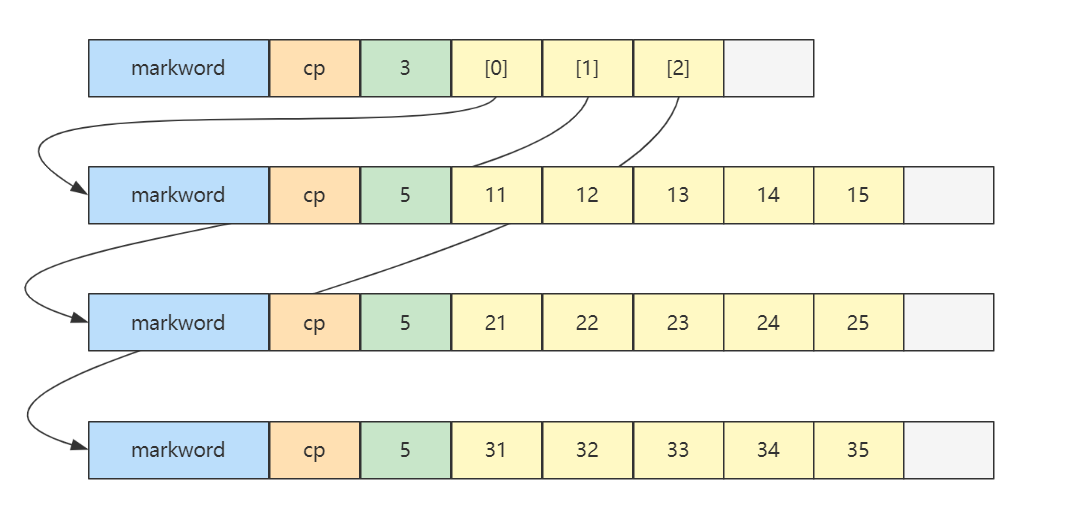
-
二维数组占 32 个字节,其中 array[0],array[1],array[2] 三个元素分别保存了指向三个一维数组的引用
-
三个一维数组各占 40 个字节
-
它们在内层布局上是连续的
更一般的,对一个二维数组 A r r a y [ m ] [ n ] Array[m][n] Array[m][n]
- m m m 是外层数组的长度,可以看作 row 行
- n n n 是内层数组的长度,可以看作 column 列
- 当访问
A
r
r
a
y
[
i
]
[
j
]
Array[i][j]
Array[i][j],
0
≤
i
<
m
,
0
≤
j
<
n
0\leq i \lt m, 0\leq j \lt n
0≤i<m,0≤j<n时,就相当于
- 先找到第 i i i 个内层数组(行)
- 再找到此内层数组中第 j j j 个元素(列)
小测试
Java 环境下(不考虑类指针和引用压缩,此为默认情况),有下面的二维数组
byte[][] array = {
{11, 12, 13, 14, 15},
{21, 22, 23, 24, 25},
{31, 32, 33, 34, 35},
};
已知 array 对象起始地址是 0x1000,那么 23 这个元素的地址是什么?
答:
- 起始地址 0x1000
- 外层数组大小:16字节对象头 + 3元素 * 每个引用4字节 + 4 对齐字节 = 32 = 0x20
- 第一个内层数组大小:16字节对象头 + 5元素 * 每个byte1字节 + 3 对齐字节 = 24 = 0x18
- 第二个内层数组,16字节对象头 = 0x10,待查找元素索引为 2
- 最后结果 = 0x1000 + 0x20 + 0x18 + 0x10 + 2*1 = 0x104a
局部性原理
这里只讨论空间局部性
- cpu 读取内存(速度慢)数据后,会将其放入高速缓存(速度快)当中,如果后来的计算再用到此数据,在缓存中能读到的话,就不必读内存了
- 缓存的最小存储单位是缓存行(cache line),一般是 64 bytes,一次读的数据少了不划算啊,因此最少读 64 bytes 填满一个缓存行,因此读入某个数据时也会读取其临近的数据,这就是所谓空间局部性
对效率的影响
比较下面 ij 和 ji 两个方法的执行效率
int rows = 1000000;
int columns = 14;
int[][] a = new int[rows][columns];
StopWatch sw = new StopWatch();
sw.start("ij");
ij(a, rows, columns);
sw.stop();
sw.start("ji");
ji(a, rows, columns);
sw.stop();
System.out.println(sw.prettyPrint());
ij 方法:一行行的遍历
public static void ij(int[][] a, int rows, int columns) {
long sum = 0L;
for (int i = 0; i < rows; i++) {
for (int j = 0; j < columns; j++) {
sum += a[i][j];
}
}
System.out.println(sum);
}
ji 方法:一列列的遍历
public static void ji(int[][] a, int rows, int columns) {
long sum = 0L;
for (int j = 0; j < columns; j++) {
for (int i = 0; i < rows; i++) {
sum += a[i][j];
}
}
System.out.println(sum);
}
执行结果
0
0
StopWatch '': running time = 96283300 ns
---------------------------------------------
ns % Task name
---------------------------------------------
016196200 017% ij
080087100 083% ji
可以看到 ij 的效率比 ji 快很多,为什么呢?
- 缓存是有限的,当新数据来了后,一些旧的缓存行数据就会被覆盖
- 如果不能充分利用缓存的数据,就会造成效率低下
以 ji 执行为例,第一次内循环要读入 [ 0 , 0 ] [0,0] [0,0] 这条数据,由于局部性原理,读入 [ 0 , 0 ] [0,0] [0,0] 的同时也读入了 [ 0 , 1 ] . . . [ 0 , 13 ] [0,1] ... [0,13] [0,1]...[0,13],如图所示

但很遗憾,第二次内循环要的是 [ 1 , 0 ] [1,0] [1,0] 这条数据,缓存中没有,于是再读入了下图的数据

这显然是一种浪费,因为 [ 0 , 1 ] . . . [ 0 , 13 ] [0,1] ... [0,13] [0,1]...[0,13] 包括 [ 1 , 1 ] . . . [ 1 , 13 ] [1,1] ... [1,13] [1,1]...[1,13] 这些数据虽然读入了缓存,却没有及时用上,而缓存的大小是有限的,等执行到第九次内循环时

缓存的第一行数据已经被新的数据 [ 8 , 0 ] . . . [ 8 , 13 ] [8,0] ... [8,13] [8,0]...[8,13] 覆盖掉了,以后如果再想读,比如 [ 0 , 1 ] [0,1] [0,1],又得到内存去读了
同理可以分析 ij 函数则能充分利用局部性原理加载到的缓存数据
举一反三
-
I/O 读写时同样可以体现局部性原理
-
数组可以充分利用局部性原理,那么链表呢?
答:链表不行,因为链表的元素并非相邻存储
越界检查
java 中对数组元素的读写都有越界检查,类似于下面的代码
bool is_within_bounds(int index) const
{
return 0 <= index && index < length();
}
- 代码位置:
openjdk\src\hotspot\share\oops\arrayOop.hpp
只不过此检查代码,不需要由程序员自己来调用,JVM 会帮我们调用
链表
概述
定义
在计算机科学中,链表是数据元素的线性集合,其每个元素都指向下一个元素,元素存储上并不连续
In computer science, a linked list is a linear collection of data elements whose order is not given by their physical placement in memory. Instead, each element points to the next.
可以分类为
-
单向链表,每个元素只知道其下一个元素是谁

-
双向链表,每个元素知道其上一个元素和下一个元素

-
循环链表,通常的链表尾节点 tail 指向的都是 null,而循环链表的 tail 指向的是头节点 head

链表内还有一种特殊的节点称为哨兵(Sentinel)节点,也叫做哑元( Dummy)节点,它不存储数据,通常用作头尾,用来简化边界判断,如下图所示

随机访问性能
根据 index 查找,时间复杂度 O ( n ) O(n) O(n)
插入或删除性能
- 起始位置: O ( 1 ) O(1) O(1)
- 结束位置:如果已知 tail 尾节点是 O ( 1 ) O(1) O(1),不知道 tail 尾节点是 O ( n ) O(n) O(n)
- 中间位置:根据 index 查找时间 + O ( 1 ) O(1) O(1)
单向链表
根据单向链表的定义,首先定义一个存储 value 和 next 指针的类 Node,和一个描述头部节点的引用
public class SinglyLinkedList {
private Node head; // 头部节点
private static class Node { // 节点类
int value;
Node next;
public Node(int value, Node next) {
this.value = value;
this.next = next;
}
}
}
- Node 定义为内部类,是为了对外隐藏实现细节,没必要让类的使用者关心 Node 结构
- 定义为 static 内部类,是因为 Node 不需要与 SinglyLinkedList 实例相关,多个 SinglyLinkedList实例能共用 Node 类定义
头部添加
public class SinglyLinkedList {
// ...
public void addFirst(int value) {
this.head = new Node(value, this.head);
}
}
- 如果 this.head == null,新增节点指向 null,并作为新的 this.head
- 如果 this.head != null,新增节点指向原来的 this.head,并作为新的 this.head
- 注意赋值操作执行顺序是从右到左
while 遍历
public class SinglyLinkedList {
// ...
public void loop() {
Node curr = this.head;
while (curr != null) {
// 做一些事
curr = curr.next;
}
}
}
for 遍历
public class SinglyLinkedList {
// ...
public void loop() {
for (Node curr = this.head; curr != null; curr = curr.next) {
// 做一些事
}
}
}
- 以上两种遍历都可以把要做的事以 Consumer 函数的方式传递进来
- Consumer 的规则是一个参数,无返回值,因此像 System.out::println 方法等都是 Consumer
- 调用 Consumer 时,将当前节点 curr.value 作为参数传递给它
迭代器遍历
public class SinglyLinkedList implements Iterable<Integer> {
// ...
private class NodeIterator implements Iterator<Integer> {
Node curr = head;
public boolean hasNext() {
return curr != null;
}
public Integer next() {
int value = curr.value;
curr = curr.next;
return value;
}
}
public Iterator<Integer> iterator() {
return new NodeIterator();
}
}
- hasNext 用来判断是否还有必要调用 next
- next 做两件事
- 返回当前节点的 value
- 指向下一个节点
- NodeIterator 要定义为非 static 内部类,是因为它与 SinglyLinkedList 实例相关,是对某个 SinglyLinkedList 实例的迭代
递归遍历
public class SinglyLinkedList implements Iterable<Integer> {
// ...
public void loop() {
recursion(this.head);
}
private void recursion(Node curr) {
if (curr == null) {
return;
}
// 前面做些事
recursion(curr.next);
// 后面做些事
}
}
尾部添加
public class SinglyLinkedList {
// ...
private Node findLast() {
if (this.head == null) {
return null;
}
Node curr;
for (curr = this.head; curr.next != null; ) {
curr = curr.next;
}
return curr;
}
public void addLast(int value) {
Node last = findLast();
if (last == null) {
addFirst(value);
return;
}
last.next = new Node(value, null);
}
}
- 注意,找最后一个节点,终止条件是 curr.next == null
- 分成两个方法是为了代码清晰,而且 findLast() 之后还能复用
尾部添加多个
public class SinglyLinkedList {
// ...
public void addLast(int first, int... rest) {
Node sublist = new Node(first, null);
Node curr = sublist;
for (int value : rest) {
curr.next = new Node(value, null);
curr = curr.next;
}
Node last = findLast();
if (last == null) {
this.head = sublist;
return;
}
last.next = sublist;
}
}
- 先串成一串 sublist
- 再作为一个整体添加
根据索引获取
public class SinglyLinkedList {
// ...
private Node findNode(int index) {
int i = 0;
for (Node curr = this.head; curr != null; curr = curr.next, i++) {
if (index == i) {
return curr;
}
}
return null;
}
private IllegalArgumentException illegalIndex(int index) {
return new IllegalArgumentException(String.format("index [%d] 不合法%n", index));
}
public int get(int index) {
Node node = findNode(index);
if (node != null) {
return node.value;
}
throw illegalIndex(index);
}
}
- 同样,分方法可以实现复用
插入
public class SinglyLinkedList {
// ...
public void insert(int index, int value) {
if (index == 0) {
addFirst(value);
return;
}
Node prev = findNode(index - 1); // 找到上一个节点
if (prev == null) { // 找不到
throw illegalIndex(index);
}
prev.next = new Node(value, prev.next);
}
}
- 插入包括下面的删除,都必须找到上一个节点
删除
public class SinglyLinkedList {
// ...
public void remove(int index) {
if (index == 0) {
if (this.head != null) {
this.head = this.head.next;
return;
} else {
throw illegalIndex(index);
}
}
Node prev = findNode(index - 1);
Node curr;
if (prev != null && (curr = prev.next) != null) {
prev.next = curr.next;
} else {
throw illegalIndex(index);
}
}
}
- 第一个 if 块对应着 removeFirst 情况
- 最后一个 if 块对应着至少得两个节点的情况
- 不仅仅判断上一个节点非空,还要保证当前节点非空
单向链表(带哨兵)
观察之前单向链表的实现,发现每个方法内几乎都有判断head是否为null这样的代码,能不能简化呢?
用一个不参与数据存储的特殊 Node 作为哨兵,它一般被称为哨兵或哑元,拥有哨兵节点的链表称为带头链表
public class SinglyLinkedListSentinel {
// ...
private Node head = new Node(Integer.MIN_VALUE, null);
}
- 具体存什么值无所谓,因为不会用到它的值
加入哨兵节点后,代码会变得比较简单,先看几个工具方法
public class SinglyLinkedListSentinel {
// ...
// 根据索引获取节点
private Node findNode(int index) {
int i = -1;
for (Node curr = this.head; curr != null; curr = curr.next, i++) {
if (i == index) {
return curr;
}
}
return null;
}
// 获取最后一个节点
private Node findLast() {
Node curr;
for (curr = this.head; curr.next != null; ) {
curr = curr.next;
}
return curr;
}
}
- findNode 与之前类似,只是 i 初始值设置为 -1 对应哨兵,实际传入的 index 也是 [ − 1 , ∞ ) [-1, \infty) [−1,∞)
- findLast 绝不会返回 null 了,就算没有其它节点,也会返回哨兵作为最后一个节点
这样,代码简化为
public class SinglyLinkedListSentinel {
// ...
public void addLast(int value) {
Node last = findLast();
/*
改动前
if (last == null) {
this.head = new Node(value, null);
return;
}
*/
last.next = new Node(value, null);
}
public void insert(int index, int value) {
/*
改动前
if (index == 0) {
this.head = new Node(value, this.head);
return;
}
*/
// index 传入 0 时,返回的是哨兵
Node prev = findNode(index - 1);
if (prev != null) {
prev.next = new Node(value, prev.next);
} else {
throw illegalIndex(index);
}
}
public void remove(int index) {
/*
改动前
if (index == 0) {
if (this.head != null) {
this.head = this.head.next;
return;
} else {
throw illegalIndex(index);
}
}
*/
// index 传入 0 时,返回的是哨兵
Node prev = findNode(index - 1);
Node curr;
if (prev != null && (curr = prev.next) != null) {
prev.next = curr.next;
} else {
throw illegalIndex(index);
}
}
public void addFirst(int value) {
/*
改动前
this.head = new Node(value, this.head);
*/
this.head.next = new Node(value, this.head.next);
// 也可以视为 insert 的特例, 即 insert(0, value);
}
}
- 对于删除,前面说了【最后一个 if 块对应着至少得两个节点的情况】,现在有了哨兵,就凑足了两个节点
双向链表(带哨兵)
public class DoublyLinkedListSentinel implements Iterable<Integer> {
private final Node head;
private final Node tail;
public DoublyLinkedListSentinel() {
head = new Node(null, 666, null);
tail = new Node(null, 888, null);
head.next = tail;
tail.prev = head;
}
private Node findNode(int index) {
int i = -1;
for (Node p = head; p != tail; p = p.next, i++) {
if (i == index) {
return p;
}
}
return null;
}
public void addFirst(int value) {
insert(0, value);
}
public void removeFirst() {
remove(0);
}
public void addLast(int value) {
Node prev = tail.prev;
Node added = new Node(prev, value, tail);
prev.next = added;
tail.prev = added;
}
public void removeLast() {
Node removed = tail.prev;
if (removed == head) {
throw illegalIndex(0);
}
Node prev = removed.prev;
prev.next = tail;
tail.prev = prev;
}
public void insert(int index, int value) {
Node prev = findNode(index - 1);
if (prev == null) {
throw illegalIndex(index);
}
Node next = prev.next;
Node inserted = new Node(prev, value, next);
prev.next = inserted;
next.prev = inserted;
}
public void remove(int index) {
Node prev = findNode(index - 1);
if (prev == null) {
throw illegalIndex(index);
}
Node removed = prev.next;
if (removed == tail) {
throw illegalIndex(index);
}
Node next = removed.next;
prev.next = next;
next.prev = prev;
}
private IllegalArgumentException illegalIndex(int index) {
return new IllegalArgumentException(
String.format("index [%d] 不合法%n", index));
}
@Override
public Iterator<Integer> iterator() {
return new Iterator<Integer>() {
Node p = head.next;
@Override
public boolean hasNext() {
return p != tail;
}
@Override
public Integer next() {
int value = p.value;
p = p.next;
return value;
}
};
}
static class Node {
Node prev;
int value;
Node next;
public Node(Node prev, int value, Node next) {
this.prev = prev;
this.value = value;
this.next = next;
}
}
}
环形链表(带哨兵)
双向环形链表带哨兵,这时哨兵既作为头,也作为尾




参考实现
public class DoublyLinkedListSentinel implements Iterable<Integer> {
@Override
public Iterator<Integer> iterator() {
return new Iterator<>() {
Node p = sentinel.next;
@Override
public boolean hasNext() {
return p != sentinel;
}
@Override
public Integer next() {
int value = p.value;
p = p.next;
return value;
}
};
}
static class Node {
Node prev;
int value;
Node next;
public Node(Node prev, int value, Node next) {
this.prev = prev;
this.value = value;
this.next = next;
}
}
private final Node sentinel = new Node(null, -1, null); // 哨兵
public DoublyLinkedListSentinel() {
sentinel.next = sentinel;
sentinel.prev = sentinel;
}
/**
* 添加到第一个
* @param value 待添加值
*/
public void addFirst(int value) {
Node next = sentinel.next;
Node prev = sentinel;
Node added = new Node(prev, value, next);
prev.next = added;
next.prev = added;
}
/**
* 添加到最后一个
* @param value 待添加值
*/
public void addLast(int value) {
Node prev = sentinel.prev;
Node next = sentinel;
Node added = new Node(prev, value, next);
prev.next = added;
next.prev = added;
}
/**
* 删除第一个
*/
public void removeFirst() {
Node removed = sentinel.next;
if (removed == sentinel) {
throw new IllegalArgumentException("非法");
}
Node a = sentinel;
Node b = removed.next;
a.next = b;
b.prev = a;
}
/**
* 删除最后一个
*/
public void removeLast() {
Node removed = sentinel.prev;
if (removed == sentinel) {
throw new IllegalArgumentException("非法");
}
Node a = removed.prev;
Node b = sentinel;
a.next = b;
b.prev = a;
}
/**
* 根据值删除节点
* <p>假定 value 在链表中作为 key, 有唯一性</p>
* @param value 待删除值
*/
public void removeByValue(int value) {
Node removed = findNodeByValue(value);
if (removed != null) {
Node prev = removed.prev;
Node next = removed.next;
prev.next = next;
next.prev = prev;
}
}
private Node findNodeByValue(int value) {
Node p = sentinel.next;
while (p != sentinel) {
if (p.value == value) {
return p;
}
p = p.next;
}
return null;
}
}
队列
概述
计算机科学中,queue 是以顺序的方式维护的一组数据集合,在一端添加数据,从另一端移除数据。习惯来说,添加的一端称为尾,移除的一端称为头,就如同生活中的排队买商品
In computer science, a queue is a collection of entities that are maintained in a sequence and can be modified by the addition of entities at one end of the sequence and the removal of entities from the other end of the sequence
先定义一个简化的队列接口
public interface Queue<E> {
/**
* 向队列尾插入值
* @param value 待插入值
* @return 插入成功返回 true, 插入失败返回 false
*/
boolean offer(E value);
/**
* 从对列头获取值, 并移除
* @return 如果队列非空返回对头值, 否则返回 null
*/
E poll();
/**
* 从对列头获取值, 不移除
* @return 如果队列非空返回对头值, 否则返回 null
*/
E peek();
/**
* 检查队列是否为空
* @return 空返回 true, 否则返回 false
*/
boolean isEmpty();
/**
* 检查队列是否已满
* @return 满返回 true, 否则返回 false
*/
boolean isFull();
}
链表实现
下面以单向环形带哨兵链表方式来实现队列



代码
public class LinkedListQueue<E>
implements Queue<E>, Iterable<E> {
private static class Node<E> {
E value;
Node<E> next;
public Node(E value, Node<E> next) {
this.value = value;
this.next = next;
}
}
private Node<E> head = new Node<>(null, null);
private Node<E> tail = head;
private int size = 0;
private int capacity = Integer.MAX_VALUE;
{
tail.next = head;
}
public LinkedListQueue() {
}
public LinkedListQueue(int capacity) {
this.capacity = capacity;
}
@Override
public boolean offer(E value) {
if (isFull()) {
return false;
}
Node<E> added = new Node<>(value, head);
tail.next = added;
tail = added;
size++;
return true;
}
@Override
public E poll() {
if (isEmpty()) {
return null;
}
Node<E> first = head.next;
head.next = first.next;
if (first == tail) {
tail = head;
}
size--;
return first.value;
}
@Override
public E peek() {
if (isEmpty()) {
return null;
}
return head.next.value;
}
@Override
public boolean isEmpty() {
return head == tail;
}
@Override
public boolean isFull() {
return size == capacity;
}
@Override
public Iterator<E> iterator() {
return new Iterator<E>() {
Node<E> p = head.next;
@Override
public boolean hasNext() {
return p != head;
}
@Override
public E next() {
E value = p.value;
p = p.next;
return value;
}
};
}
}
环形数组实现
好处
- 对比普通数组,起点和终点更为自由,不用考虑数据移动
- “环”意味着不会存在【越界】问题
- 数组性能更佳
- 环形数组比较适合实现有界队列、RingBuffer 等
、
下标计算
例如,数组长度是 5,当前位置是 3 ,向前走 2 步,此时下标为 ( 3 + 2 ) % 5 = 0 (3 + 2)\%5 = 0 (3+2)%5=0

( c u r + s t e p ) % l e n g t h (cur + step) \% length (cur+step)%length
- cur 当前指针位置
- step 前进步数
- length 数组长度
注意:
- 如果 step = 1,也就是一次走一步,可以在 >= length 时重置为 0 即可
判断空

判断满

满之后的策略可以根据业务需求决定
- 例如我们要实现的环形队列,满之后就拒绝入队
代码
public class ArrayQueue<E> implements Queue<E>, Iterable<E>{
private int head = 0;
private int tail = 0;
private final E[] array;
private final int length;
@SuppressWarnings("all")
public ArrayQueue(int capacity) {
length = capacity + 1;
array = (E[]) new Object[length];
}
@Override
public boolean offer(E value) {
if (isFull()) {
return false;
}
array[tail] = value;
tail = (tail + 1) % length;
return true;
}
@Override
public E poll() {
if (isEmpty()) {
return null;
}
E value = array[head];
head = (head + 1) % length;
return value;
}
@Override
public E peek() {
if (isEmpty()) {
return null;
}
return array[head];
}
@Override
public boolean isEmpty() {
return tail == head;
}
@Override
public boolean isFull() {
return (tail + 1) % length == head;
}
@Override
public Iterator<E> iterator() {
return new Iterator<E>() {
int p = head;
@Override
public boolean hasNext() {
return p != tail;
}
@Override
public E next() {
E value = array[p];
p = (p + 1) % array.length;
return value;
}
};
}
}
判断空、满方法2
引入 size
public class ArrayQueue2<E> implements Queue<E>, Iterable<E> {
private int head = 0;
private int tail = 0;
private final E[] array;
private final int capacity;
private int size = 0;
@SuppressWarnings("all")
public ArrayQueue2(int capacity) {
this.capacity = capacity;
array = (E[]) new Object[capacity];
}
@Override
public boolean offer(E value) {
if (isFull()) {
return false;
}
array[tail] = value;
tail = (tail + 1) % capacity;
size++;
return true;
}
@Override
public E poll() {
if (isEmpty()) {
return null;
}
E value = array[head];
head = (head + 1) % capacity;
size--;
return value;
}
@Override
public E peek() {
if (isEmpty()) {
return null;
}
return array[head];
}
@Override
public boolean isEmpty() {
return size == 0;
}
@Override
public boolean isFull() {
return size == capacity;
}
@Override
public Iterator<E> iterator() {
return new Iterator<E>() {
int p = head;
@Override
public boolean hasNext() {
return p != tail;
}
@Override
public E next() {
E value = array[p];
p = (p + 1) % capacity;
return value;
}
};
}
}
判断空、满方法3
-
head 和 tail 不断递增,用到索引时,再用它们进行计算,两个问题
-
如何保证 head 和 tail 自增超过正整数最大值的正确性
-
如何让取模运算性能更高
-
-
答案:让 capacity 为 2 的幂
public class ArrayQueue3<E> implements Queue<E>, Iterable<E> {
private int head = 0;
private int tail = 0;
private final E[] array;
private final int capacity;
@SuppressWarnings("all")
public ArrayQueue3(int capacity) {
if ((capacity & capacity - 1) != 0) {
throw new IllegalArgumentException("capacity 必须为 2 的幂");
}
this.capacity = capacity;
array = (E[]) new Object[this.capacity];
}
@Override
public boolean offer(E value) {
if (isFull()) {
return false;
}
array[tail & capacity - 1] = value;
tail++;
return true;
}
@Override
public E poll() {
if (isEmpty()) {
return null;
}
E value = array[head & capacity - 1];
head++;
return value;
}
@Override
public E peek() {
if (isEmpty()) {
return null;
}
return array[head & capacity - 1];
}
@Override
public boolean isEmpty() {
return tail - head == 0;
}
@Override
public boolean isFull() {
return tail - head == capacity;
}
@Override
public Iterator<E> iterator() {
return new Iterator<E>() {
int p = head;
@Override
public boolean hasNext() {
return p != tail;
}
@Override
public E next() {
E value = array[p & capacity - 1];
p++;
return value;
}
};
}
}
栈
概述
计算机科学中,stack 是一种线性的数据结构,只能在其一端添加数据和移除数据。习惯来说,这一端称之为栈顶,另一端不能操作数据的称之为栈底,就如同生活中的一摞书
先提供一个栈接口
public interface Stack<E> {
/**
* 向栈顶压入元素
* @param value 待压入值
* @return 压入成功返回 true, 否则返回 false
*/
boolean push(E value);
/**
* 从栈顶弹出元素
* @return 栈非空返回栈顶元素, 栈为空返回 null
*/
E pop();
/**
* 返回栈顶元素, 不弹出
* @return 栈非空返回栈顶元素, 栈为空返回 null
*/
E peek();
/**
* 判断栈是否为空
* @return 空返回 true, 否则返回 false
*/
boolean isEmpty();
/**
* 判断栈是否已满
* @return 满返回 true, 否则返回 false
*/
boolean isFull();
}
链表实现
public class LinkedListStack<E> implements Stack<E>, Iterable<E> {
private final int capacity;
private int size;
private final Node<E> head = new Node<>(null, null);
public LinkedListStack(int capacity) {
this.capacity = capacity;
}
@Override
public boolean push(E value) {
if (isFull()) {
return false;
}
head.next = new Node<>(value, head.next);
size++;
return true;
}
@Override
public E pop() {
if (isEmpty()) {
return null;
}
Node<E> first = head.next;
head.next = first.next;
size--;
return first.value;
}
@Override
public E peek() {
if (isEmpty()) {
return null;
}
return head.next.value;
}
@Override
public boolean isEmpty() {
return head.next == null;
}
@Override
public boolean isFull() {
return size == capacity;
}
@Override
public Iterator<E> iterator() {
return new Iterator<E>() {
Node<E> p = head.next;
@Override
public boolean hasNext() {
return p != null;
}
@Override
public E next() {
E value = p.value;
p = p.next;
return value;
}
};
}
static class Node<E> {
E value;
Node<E> next;
public Node(E value, Node<E> next) {
this.value = value;
this.next = next;
}
}
}
数组实现
public class ArrayStack<E> implements Stack<E>, Iterable<E>{
private final E[] array;
private int top = 0;
@SuppressWarnings("all")
public ArrayStack(int capacity) {
this.array = (E[]) new Object[capacity];
}
@Override
public boolean push(E value) {
if (isFull()) {
return false;
}
array[top++] = value;
return true;
}
@Override
public E pop() {
if (isEmpty()) {
return null;
}
return array[--top];
}
@Override
public E peek() {
if (isEmpty()) {
return null;
}
return array[top-1];
}
@Override
public boolean isEmpty() {
return top == 0;
}
@Override
public boolean isFull() {
return top == array.length;
}
@Override
public Iterator<E> iterator() {
return new Iterator<E>() {
int p = top;
@Override
public boolean hasNext() {
return p > 0;
}
@Override
public E next() {
return array[--p];
}
};
}
}
应用
模拟如下方法调用
public static void main(String[] args) {
System.out.println("main1");
System.out.println("main2");
method1();
method2();
System.out.println("main3");
}
public static void method1() {
System.out.println("method1");
method3();
}
public static void method2() {
System.out.println("method2");
}
public static void method3() {
System.out.println("method3");
}
模拟代码
public class CPU {
static class Frame {
int exit;
public Frame(int exit) {
this.exit = exit;
}
}
static int pc = 1; // 模拟程序计数器 Program counter
static ArrayStack<Frame> stack = new ArrayStack<>(100); // 模拟方法调用栈
public static void main(String[] args) {
stack.push(new Frame(-1));
while (!stack.isEmpty()) {
switch (pc) {
case 1 -> {
System.out.println("main1");
pc++;
}
case 2 -> {
System.out.println("main2");
pc++;
}
case 3 -> {
stack.push(new Frame(pc + 1));
pc = 100;
}
case 4 -> {
stack.push(new Frame(pc + 1));
pc = 200;
}
case 5 -> {
System.out.println("main3");
pc = stack.pop().exit;
}
case 100 -> {
System.out.println("method1");
stack.push(new Frame(pc + 1));
pc = 300;
}
case 101 -> {
pc = stack.pop().exit;
}
case 200 -> {
System.out.println("method2");
pc = stack.pop().exit;
}
case 300 -> {
System.out.println("method3");
pc = stack.pop().exit;
}
}
}
}
}
双端队列
概述
双端队列、队列、栈对比
| 定义 | 特点 | |
|---|---|---|
| 队列 | 一端删除(头)另一端添加(尾) | First In First Out |
| 栈 | 一端删除和添加(顶) | Last In First Out |
| 双端队列 | 两端都可以删除、添加 | |
| 优先级队列 | 优先级高者先出队 | |
| 延时队列 | 根据延时时间确定优先级 | |
| 并发非阻塞队列 | 队列空或满时不阻塞 | |
| 并发阻塞队列 | 队列空时删除阻塞、队列满时添加阻塞 |
注1:
- Java 中 LinkedList 即为典型双端队列实现,不过它同时实现了 Queue 接口,也提供了栈的 push pop 等方法
注2:
不同语言,操作双端队列的方法命名有所不同,参见下表
操作 Java JavaScript C++ leetCode 641 尾部插入 offerLast push push_back insertLast 头部插入 offerFirst unshift push_front insertFront 尾部移除 pollLast pop pop_back deleteLast 头部移除 pollFirst shift pop_front deleteFront 尾部获取 peekLast at(-1) back getRear 头部获取 peekFirst at(0) front getFront 吐槽一下 leetCode 命名比较 low
常见的单词还有 enqueue 入队、dequeue 出队
接口定义
public interface Deque<E> {
boolean offerFirst(E e);
boolean offerLast(E e);
E pollFirst();
E pollLast();
E peekFirst();
E peekLast();
boolean isEmpty();
boolean isFull();
}
链表实现
/**
* 基于环形链表的双端队列
* @param <E> 元素类型
*/
public class LinkedListDeque<E> implements Deque<E>, Iterable<E> {
@Override
public boolean offerFirst(E e) {
if (isFull()) {
return false;
}
size++;
Node<E> a = sentinel;
Node<E> b = sentinel.next;
Node<E> offered = new Node<>(a, e, b);
a.next = offered;
b.prev = offered;
return true;
}
@Override
public boolean offerLast(E e) {
if (isFull()) {
return false;
}
size++;
Node<E> a = sentinel.prev;
Node<E> b = sentinel;
Node<E> offered = new Node<>(a, e, b);
a.next = offered;
b.prev = offered;
return true;
}
@Override
public E pollFirst() {
if (isEmpty()) {
return null;
}
Node<E> a = sentinel;
Node<E> polled = sentinel.next;
Node<E> b = polled.next;
a.next = b;
b.prev = a;
size--;
return polled.value;
}
@Override
public E pollLast() {
if (isEmpty()) {
return null;
}
Node<E> polled = sentinel.prev;
Node<E> a = polled.prev;
Node<E> b = sentinel;
a.next = b;
b.prev = a;
size--;
return polled.value;
}
@Override
public E peekFirst() {
if (isEmpty()) {
return null;
}
return sentinel.next.value;
}
@Override
public E peekLast() {
if (isEmpty()) {
return null;
}
return sentinel.prev.value;
}
@Override
public boolean isEmpty() {
return size == 0;
}
@Override
public boolean isFull() {
return size == capacity;
}
@Override
public Iterator<E> iterator() {
return new Iterator<E>() {
Node<E> p = sentinel.next;
@Override
public boolean hasNext() {
return p != sentinel;
}
@Override
public E next() {
E value = p.value;
p = p.next;
return value;
}
};
}
static class Node<E> {
Node<E> prev;
E value;
Node<E> next;
public Node(Node<E> prev, E value, Node<E> next) {
this.prev = prev;
this.value = value;
this.next = next;
}
}
Node<E> sentinel = new Node<>(null, null, null);
int capacity;
int size;
public LinkedListDeque(int capacity) {
sentinel.next = sentinel;
sentinel.prev = sentinel;
this.capacity = capacity;
}
}
数组实现
/**
* 基于循环数组实现, 特点
* <ul>
* <li>tail 停下来的位置不存储, 会浪费一个位置</li>
* </ul>
* @param <E>
*/
public class ArrayDeque1<E> implements Deque<E>, Iterable<E> {
/*
h
t
0 1 2 3
b a
*/
@Override
public boolean offerFirst(E e) {
if (isFull()) {
return false;
}
head = dec(head, array.length);
array[head] = e;
return true;
}
@Override
public boolean offerLast(E e) {
if (isFull()) {
return false;
}
array[tail] = e;
tail = inc(tail, array.length);
return true;
}
@Override
public E pollFirst() {
if (isEmpty()) {
return null;
}
E e = array[head];
array[head] = null;
head = inc(head, array.length);
return e;
}
@Override
public E pollLast() {
if (isEmpty()) {
return null;
}
tail = dec(tail, array.length);
E e = array[tail];
array[tail] = null;
return e;
}
@Override
public E peekFirst() {
if (isEmpty()) {
return null;
}
return array[head];
}
@Override
public E peekLast() {
if (isEmpty()) {
return null;
}
return array[dec(tail, array.length)];
}
@Override
public boolean isEmpty() {
return head == tail;
}
@Override
public boolean isFull() {
if (tail > head) {
return tail - head == array.length - 1;
} else if (tail < head) {
return head - tail == 1;
} else {
return false;
}
}
@Override
public Iterator<E> iterator() {
return new Iterator<E>() {
int p = head;
@Override
public boolean hasNext() {
return p != tail;
}
@Override
public E next() {
E e = array[p];
p = inc(p, array.length);
return e;
}
};
}
E[] array;
int head;
int tail;
@SuppressWarnings("unchecked")
public ArrayDeque1(int capacity) {
array = (E[]) new Object[capacity + 1];
}
static int inc(int i, int length) {
if (i + 1 >= length) {
return 0;
}
return i + 1;
}
static int dec(int i, int length) {
if (i - 1 < 0) {
return length - 1;
}
return i - 1;
}
}
数组实现中,如果存储的是基本类型,那么无需考虑内存释放,例如

但如果存储的是引用类型,应当设置该位置的引用为 null,以便内存及时释放
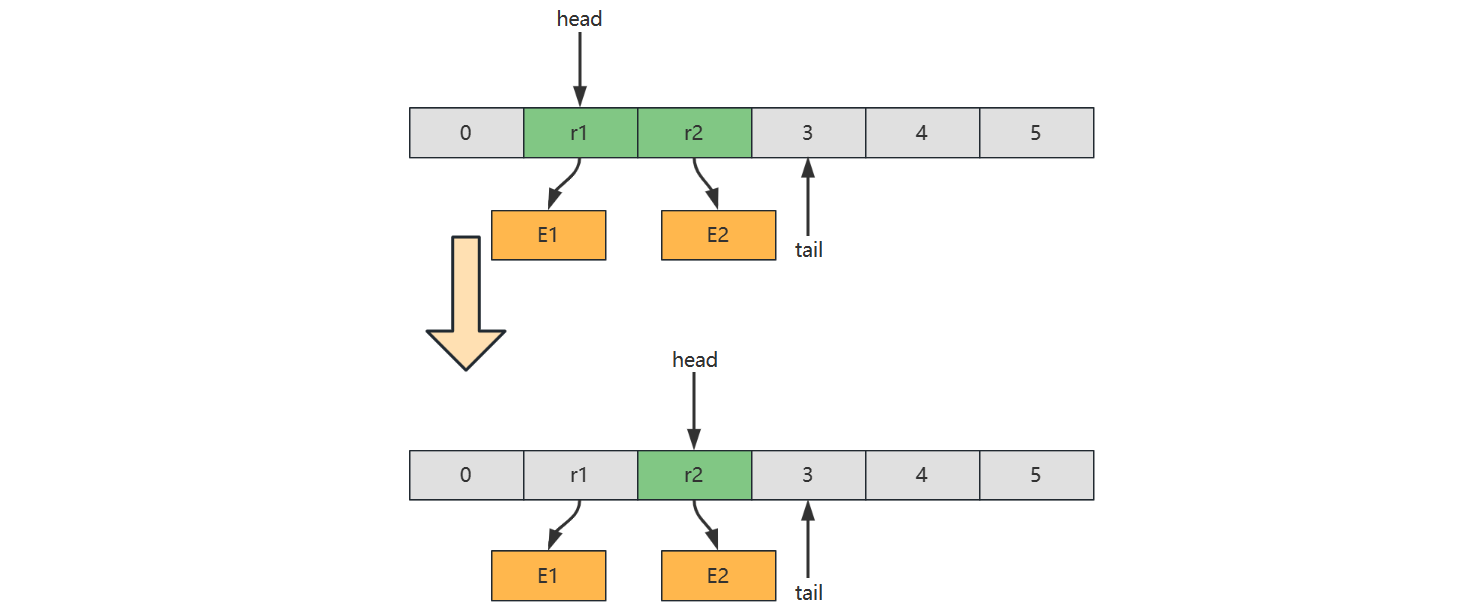
优先级队列
无序数组实现
要点
- 入队保持顺序
- 出队前找到优先级最高的出队,相当于一次选择排序
public class PriorityQueue1<E extends Priority> implements Queue<E> {
Priority[] array;
int size;
public PriorityQueue1(int capacity) {
array = new Priority[capacity];
}
@Override // O(1)
public boolean offer(E e) {
if (isFull()) {
return false;
}
array[size++] = e;
return true;
}
// 返回优先级最高的索引值
private int selectMax() {
int max = 0;
for (int i = 1; i < size; i++) {
if (array[i].priority() > array[max].priority()) {
max = i;
}
}
return max;
}
@Override // O(n)
public E poll() {
if (isEmpty()) {
return null;
}
int max = selectMax();
E e = (E) array[max];
remove(max);
return e;
}
private void remove(int index) {
if (index < size - 1) {
System.arraycopy(array, index + 1,
array, index, size - 1 - index);
}
array[--size] = null; // help GC
}
@Override
public E peek() {
if (isEmpty()) {
return null;
}
int max = selectMax();
return (E) array[max];
}
@Override
public boolean isEmpty() {
return size == 0;
}
@Override
public boolean isFull() {
return size == array.length;
}
}
有序数组实现
要点
- 入队后排好序,优先级最高的排列在尾部
- 出队只需删除尾部元素即可
public class PriorityQueue2<E extends Priority> implements Queue<E> {
Priority[] array;
int size;
public PriorityQueue2(int capacity) {
array = new Priority[capacity];
}
// O(n)
@Override
public boolean offer(E e) {
if (isFull()) {
return false;
}
insert(e);
size++;
return true;
}
// 一轮插入排序
private void insert(E e) {
int i = size - 1;
while (i >= 0 && array[i].priority() > e.priority()) {
array[i + 1] = array[i];
i--;
}
array[i + 1] = e;
}
// O(1)
@Override
public E poll() {
if (isEmpty()) {
return null;
}
E e = (E) array[size - 1];
array[--size] = null; // help GC
return e;
}
@Override
public E peek() {
if (isEmpty()) {
return null;
}
return (E) array[size - 1];
}
@Override
public boolean isEmpty() {
return size == 0;
}
@Override
public boolean isFull() {
return size == array.length;
}
}
堆实现
计算机科学中,堆是一种基于树的数据结构,通常用完全二叉树实现。堆的特性如下
- 在大顶堆中,任意节点 C 与它的父节点 P 符合 P . v a l u e ≥ C . v a l u e P.value \geq C.value P.value≥C.value
- 而小顶堆中,任意节点 C 与它的父节点 P 符合 P . v a l u e ≤ C . v a l u e P.value \leq C.value P.value≤C.value
- 最顶层的节点(没有父亲)称之为 root 根节点
In computer science, a heap is a specialized tree-based data structure which is essentially an almost complete tree that satisfies the heap property: in a max heap, for any given node C, if P is a parent node of C, then the key (the value) of P is greater than or equal to the key of C. In a min heap, the key of P is less than or equal to the key of C. The node at the “top” of the heap (with no parents) is called the root node
例1 - 满二叉树(Full Binary Tree)特点:每一层都是填满的
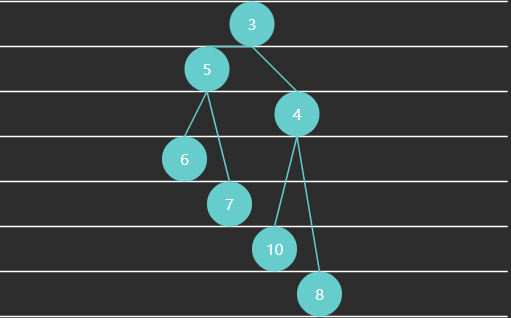
例2 - 完全二叉树(Complete Binary Tree)特点:最后一层可能未填满,靠左对齐
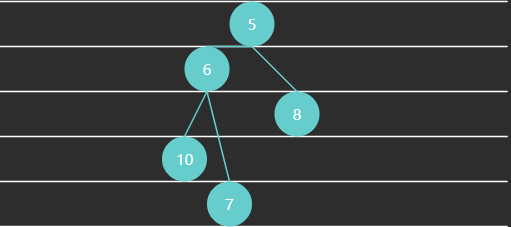
例3 - 大顶堆
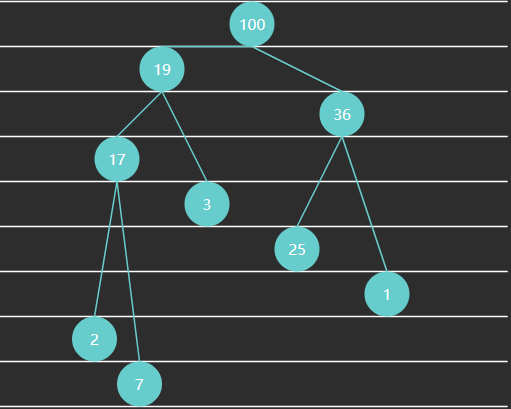
例4 - 小顶堆
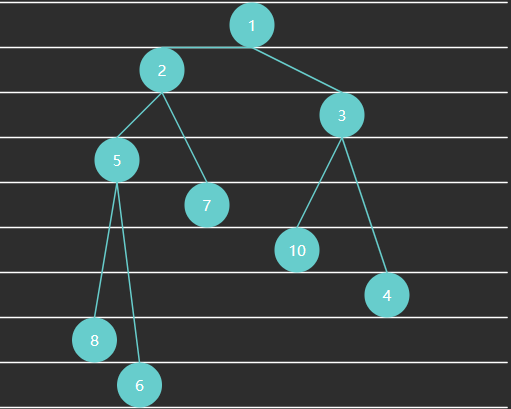
完全二叉树可以使用数组来表示

特征
- 如果从索引 0 开始存储节点数据
- 节点 i i i 的父节点为 f l o o r ( ( i − 1 ) / 2 ) floor((i-1)/2) floor((i−1)/2),当 i > 0 i>0 i>0 时
- 节点 i i i 的左子节点为 2 i + 1 2i+1 2i+1,右子节点为 2 i + 2 2i+2 2i+2,当然它们得 < s i z e < size <size
- 如果从索引 1 开始存储节点数据
- 节点 i i i 的父节点为 f l o o r ( i / 2 ) floor(i/2) floor(i/2),当 i > 1 i > 1 i>1 时
- 节点 i i i 的左子节点为 2 i 2i 2i,右子节点为 2 i + 1 2i+1 2i+1,同样得 < s i z e < size <size
代码
public class PriorityQueue4<E extends Priority> implements Queue<E> {
Priority[] array;
int size;
public PriorityQueue4(int capacity) {
array = new Priority[capacity];
}
@Override
public boolean offer(E offered) {
if (isFull()) {
return false;
}
int child = size++;
int parent = (child - 1) / 2;
while (child > 0 && offered.priority() > array[parent].priority()) {
array[child] = array[parent];
child = parent;
parent = (child - 1) / 2;
}
array[child] = offered;
return true;
}
private void swap(int i, int j) {
Priority t = array[i];
array[i] = array[j];
array[j] = t;
}
@Override
public E poll() {
if (isEmpty()) {
return null;
}
swap(0, size - 1);
size--;
Priority e = array[size];
array[size] = null;
shiftDown(0);
return (E) e;
}
void shiftDown(int parent) {
int left = 2 * parent + 1;
int right = left + 1;
int max = parent;
if (left < size && array[left].priority() > array[max].priority()) {
max = left;
}
if (right < size && array[right].priority() > array[max].priority()) {
max = right;
}
if (max != parent) {
swap(max, parent);
shiftDown(max);
}
}
@Override
public E peek() {
if (isEmpty()) {
return null;
}
return (E) array[0];
}
@Override
public boolean isEmpty() {
return size == 0;
}
@Override
public boolean isFull() {
return size == array.length;
}
}
阻塞队列
之前的队列在很多场景下都不能很好地工作,例如
- 大部分场景要求分离向队列放入(生产者)、从队列拿出(消费者)两个角色、它们得由不同的线程来担当,而之前的实现根本没有考虑线程安全问题
- 队列为空,那么在之前的实现里会返回 null,如果就是硬要拿到一个元素呢?只能不断循环尝试
- 队列为满,那么再之前的实现里会返回 false,如果就是硬要塞入一个元素呢?只能不断循环尝试
因此我们需要解决的问题有
- 用锁保证线程安全
- 用条件变量让等待非空线程与等待不满线程进入等待状态,而不是不断循环尝试,让 CPU 空转
有同学对线程安全还没有足够的认识,下面举一个反例,两个线程都要执行入队操作(几乎在同一时刻)
public class TestThreadUnsafe {
private final String[] array = new String[10];
private int tail = 0;
public void offer(String e) {
array[tail] = e;
tail++;
}
@Override
public String toString() {
return Arrays.toString(array);
}
public static void main(String[] args) {
TestThreadUnsafe queue = new TestThreadUnsafe();
new Thread(()-> queue.offer("e1"), "t1").start();
new Thread(()-> queue.offer("e2"), "t2").start();
}
}
执行的时间序列如下,假设初始状态 tail = 0,在执行过程中由于 CPU 在两个线程之间切换,造成了指令交错
| 线程1 | 线程2 | 说明 |
|---|---|---|
| array[tail]=e1 | 线程1 向 tail 位置加入 e1 这个元素,但还没来得及执行 tail++ | |
| array[tail]=e2 | 线程2 向 tail 位置加入 e2 这个元素,覆盖掉了 e1 | |
| tail++ | tail 自增为1 | |
| tail++ | tail 自增为2 | |
| 最后状态 tail 为 2,数组为 [e2, null, null …] |
糟糕的是,由于指令交错的顺序不同,得到的结果不止以上一种,宏观上造成混乱的效果
单锁实现
Java 中要防止代码段交错执行,需要使用锁,有两种选择
- synchronized 代码块,属于关键字级别提供锁保护,功能少
- ReentrantLock 类,功能丰富
以 ReentrantLock 为例
ReentrantLock lock = new ReentrantLock();
public void offer(String e) {
lock.lockInterruptibly();
try {
array[tail] = e;
tail++;
} finally {
lock.unlock();
}
}
只要两个线程执行上段代码时,锁对象是同一个,就能保证 try 块内的代码的执行不会出现指令交错现象,即执行顺序只可能是下面两种情况之一
| 线程1 | 线程2 | 说明 |
|---|---|---|
| lock.lockInterruptibly() | t1对锁对象上锁 | |
| array[tail]=e1 | ||
| lock.lockInterruptibly() | 即使 CPU 切换到线程2,但由于t1已经对该对象上锁,因此线程2卡在这儿进不去 | |
| tail++ | 切换回线程1 执行后续代码 | |
| lock.unlock() | 线程1 解锁 | |
| array[tail]=e2 | 线程2 此时才能获得锁,执行它的代码 | |
| tail++ |
- 另一种情况是线程2 先获得锁,线程1 被挡在外面
- 要明白保护的本质,本例中是保护的是 tail 位置读写的安全
事情还没有完,上面的例子是队列还没有放满的情况,考虑下面的代码(这回锁同时保护了 tail 和 size 的读写安全)
ReentrantLock lock = new ReentrantLock();
int size = 0;
public void offer(String e) {
lock.lockInterruptibly();
try {
if(isFull()) {
// 满了怎么办?
}
array[tail] = e;
tail++;
size++;
} finally {
lock.unlock();
}
}
private boolean isFull() {
return size == array.length;
}
之前是返回 false 表示添加失败,前面分析过想达到这么一种效果:
- 在队列满时,不是立刻返回,而是当前线程进入等待
- 什么时候队列不满了,再唤醒这个等待的线程,从上次的代码处继续向下运行
ReentrantLock 可以配合条件变量来实现,代码进化为
ReentrantLock lock = new ReentrantLock();
Condition tailWaits = lock.newCondition(); // 条件变量
int size = 0;
public void offer(String e) {
lock.lockInterruptibly();
try {
while (isFull()) {
tailWaits.await(); // 当队列满时, 当前线程进入 tailWaits 等待
}
array[tail] = e;
tail++;
size++;
} finally {
lock.unlock();
}
}
private boolean isFull() {
return size == array.length;
}
- 条件变量底层也是个队列,用来存储这些需要等待的线程,当队列满了,就会将 offer 线程加入条件队列,并暂时释放锁
- 将来我们的队列如果不满了(由 poll 线程那边得知)可以调用 tailWaits.signal() 来唤醒 tailWaits 中首个等待的线程,被唤醒的线程会再次抢到锁,从上次 await 处继续向下运行
思考为何要用 while 而不是 if,设队列容量是 3
| 操作前 | offer(4) | offer(5) | poll() | 操作后 |
|---|---|---|---|---|
| [1 2 3] | 队列满,进入tailWaits 等待 | [1 2 3] | ||
| [1 2 3] | 取走 1,队列不满,唤醒线程 | [2 3] | ||
| [2 3] | 抢先获得锁,发现不满,放入 5 | [2 3 5] | ||
| [2 3 5] | 从上次等待处直接向下执行 | [2 3 5 ?] |
关键点:
- 从 tailWaits 中唤醒的线程,会与新来的 offer 的线程争抢锁,谁能抢到是不一定的,如果后者先抢到,就会导致条件又发生变化
- 这种情况称之为虚假唤醒,唤醒后应该重新检查条件,看是不是得重新进入等待
最后的实现代码
/**
* 单锁实现
* @param <E> 元素类型
*/
public class BlockingQueue1<E> implements BlockingQueue<E> {
private final E[] array;
private int head = 0;
private int tail = 0;
private int size = 0; // 元素个数
@SuppressWarnings("all")
public BlockingQueue1(int capacity) {
array = (E[]) new Object[capacity];
}
ReentrantLock lock = new ReentrantLock();
Condition tailWaits = lock.newCondition();
Condition headWaits = lock.newCondition();
@Override
public void offer(E e) throws InterruptedException {
lock.lockInterruptibly();
try {
while (isFull()) {
tailWaits.await();
}
array[tail] = e;
if (++tail == array.length) {
tail = 0;
}
size++;
headWaits.signal();
} finally {
lock.unlock();
}
}
@Override
public void offer(E e, long timeout) throws InterruptedException {
lock.lockInterruptibly();
try {
long t = TimeUnit.MILLISECONDS.toNanos(timeout);
while (isFull()) {
if (t <= 0) {
return;
}
t = tailWaits.awaitNanos(t);
}
array[tail] = e;
if (++tail == array.length) {
tail = 0;
}
size++;
headWaits.signal();
} finally {
lock.unlock();
}
}
@Override
public E poll() throws InterruptedException {
lock.lockInterruptibly();
try {
while (isEmpty()) {
headWaits.await();
}
E e = array[head];
array[head] = null; // help GC
if (++head == array.length) {
head = 0;
}
size--;
tailWaits.signal();
return e;
} finally {
lock.unlock();
}
}
private boolean isEmpty() {
return size == 0;
}
private boolean isFull() {
return size == array.length;
}
}
- public void offer(E e, long timeout) throws InterruptedException 是带超时的版本,可以只等待一段时间,而不是永久等下去,类似的 poll 也可以做带超时的版本,这个留给大家了
注意
- JDK 中 BlockingQueue 接口的方法命名与我的示例有些差异
- 方法 offer(E e) 是非阻塞的实现,阻塞实现方法为 put(E e)
- 方法 poll() 是非阻塞的实现,阻塞实现方法为 take()
双锁实现
单锁的缺点在于:
- 生产和消费几乎是不冲突的,唯一冲突的是生产者和消费者它们有可能同时修改 size
- 冲突的主要是生产者之间:多个 offer 线程修改 tail
- 冲突的还有消费者之间:多个 poll 线程修改 head
如果希望进一步提高性能,可以用两把锁
- 一把锁保护 tail
- 另一把锁保护 head
ReentrantLock headLock = new ReentrantLock(); // 保护 head 的锁
Condition headWaits = headLock.newCondition(); // 队列空时,需要等待的线程集合
ReentrantLock tailLock = new ReentrantLock(); // 保护 tail 的锁
Condition tailWaits = tailLock.newCondition(); // 队列满时,需要等待的线程集合
先看看 offer 方法的初步实现
@Override
public void offer(E e) throws InterruptedException {
tailLock.lockInterruptibly();
try {
// 队列满等待
while (isFull()) {
tailWaits.await();
}
// 不满则入队
array[tail] = e;
if (++tail == array.length) {
tail = 0;
}
// 修改 size (有问题)
size++;
} finally {
tailLock.unlock();
}
}
上面代码的缺点是 size 并不受 tailLock 保护,tailLock 与 headLock 是两把不同的锁,并不能实现互斥的效果。因此,size 需要用下面的代码保证原子性
AtomicInteger size = new AtomicInteger(0); // 保护 size 的原子变量
size.getAndIncrement(); // 自增
size.getAndDecrement(); // 自减
代码修改为
@Override
public void offer(E e) throws InterruptedException {
tailLock.lockInterruptibly();
try {
// 队列满等待
while (isFull()) {
tailWaits.await();
}
// 不满则入队
array[tail] = e;
if (++tail == array.length) {
tail = 0;
}
// 修改 size
size.getAndIncrement();
} finally {
tailLock.unlock();
}
}
对称地,可以写出 poll 方法
@Override
public E poll() throws InterruptedException {
E e;
headLock.lockInterruptibly();
try {
// 队列空等待
while (isEmpty()) {
headWaits.await();
}
// 不空则出队
e = array[head];
if (++head == array.length) {
head = 0;
}
// 修改 size
size.getAndDecrement();
} finally {
headLock.unlock();
}
return e;
}
下面来看一个难题,就是如何通知 headWaits 和 tailWaits 中等待的线程,比如 poll 方法拿走一个元素,通知 tailWaits:我拿走一个,不满了噢,你们可以放了,因此代码改为
@Override
public E poll() throws InterruptedException {
E e;
headLock.lockInterruptibly();
try {
// 队列空等待
while (isEmpty()) {
headWaits.await();
}
// 不空则出队
e = array[head];
if (++head == array.length) {
head = 0;
}
// 修改 size
size.getAndDecrement();
// 通知 tailWaits 不满(有问题)
tailWaits.signal();
} finally {
headLock.unlock();
}
return e;
}
问题在于要使用这些条件变量的 await(), signal() 等方法需要先获得与之关联的锁,上面的代码若直接运行会出现以下错误
java.lang.IllegalMonitorStateException
那有同学说,加上锁不就行了吗,于是写出了下面的代码

发现什么问题了?两把锁这么嵌套使用,非常容易出现死锁,如下所示
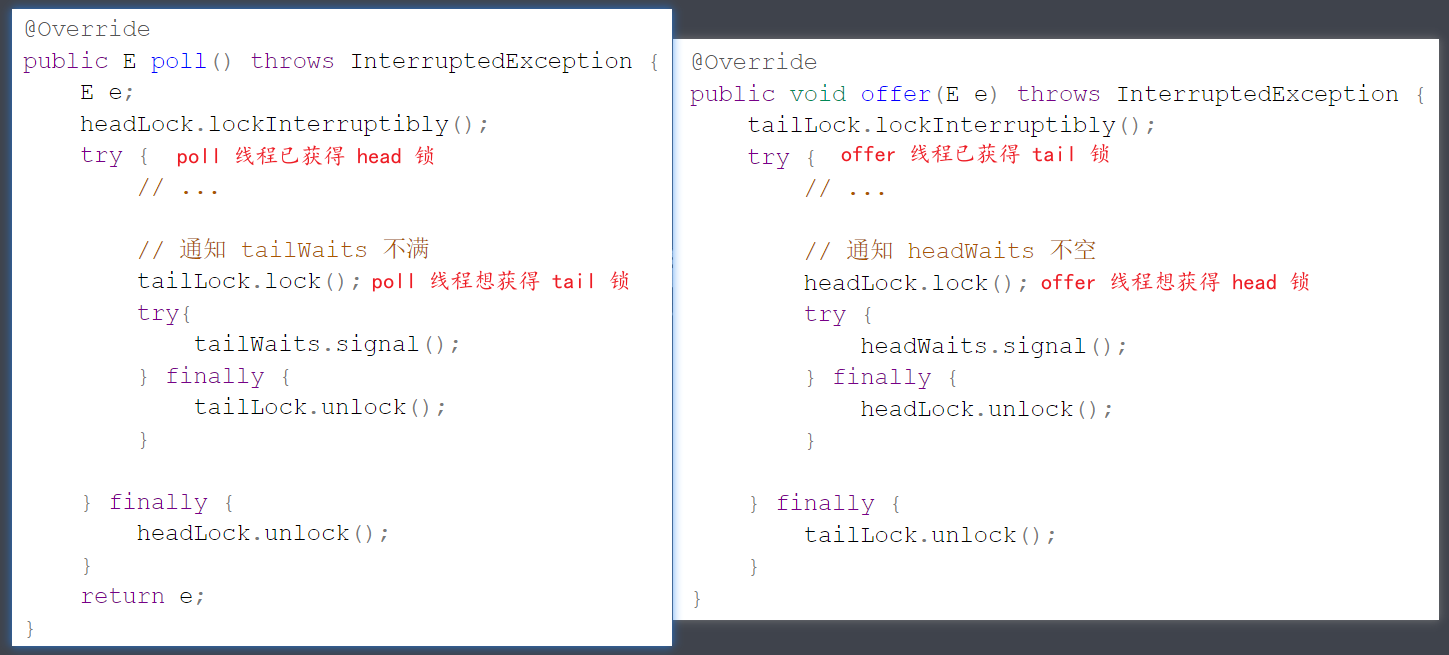
因此得避免嵌套,两段加锁的代码变成了下面平级的样子
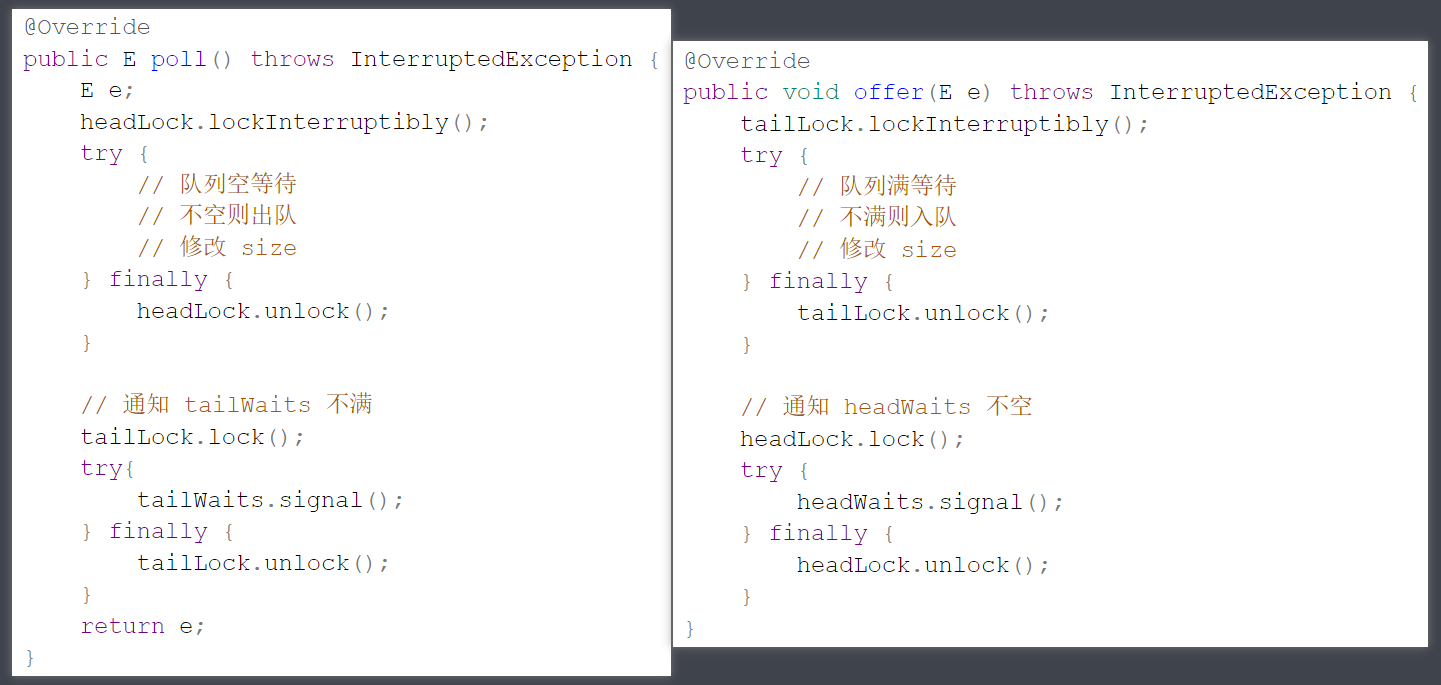
性能还可以进一步提升
-
代码调整后 offer 并没有同时获取 tailLock 和 headLock 两把锁,因此两次加锁之间会有空隙,这个空隙内可能有其它的 offer 线程添加了更多的元素,那么这些线程都要执行 signal(),通知 poll 线程队列非空吗?
- 每次调用 signal() 都需要这些 offer 线程先获得 headLock 锁,成本较高,要想法减少 offer 线程获得 headLock 锁的次数
- 可以加一个条件:当 offer 增加前队列为空,即从 0 变化到不空,才由此 offer 线程来通知 headWaits,其它情况不归它管
-
队列从 0 变化到不空,会唤醒一个等待的 poll 线程,这个线程被唤醒后,肯定能拿到 headLock 锁,因此它具备了唤醒 headWaits 上其它 poll 线程的先决条件。如果检查出此时有其它 offer 线程新增了元素(不空,但不是从0变化而来),那么不妨由此 poll 线程来唤醒其它 poll 线程
这个技巧被称之为级联通知(cascading notifies),类似的原因
- 在 poll 时队列从满变化到不满,才由此 poll 线程来唤醒一个等待的 offer 线程,目的也是为了减少 poll 线程对 tailLock 上锁次数,剩下等待的 offer 线程由这个 offer 线程间接唤醒
最终的代码为
public class BlockingQueue2<E> implements BlockingQueue<E> {
private final E[] array;
private int head = 0;
private int tail = 0;
private final AtomicInteger size = new AtomicInteger(0);
ReentrantLock headLock = new ReentrantLock();
Condition headWaits = headLock.newCondition();
ReentrantLock tailLock = new ReentrantLock();
Condition tailWaits = tailLock.newCondition();
public BlockingQueue2(int capacity) {
this.array = (E[]) new Object[capacity];
}
@Override
public void offer(E e) throws InterruptedException {
int c;
tailLock.lockInterruptibly();
try {
while (isFull()) {
tailWaits.await();
}
array[tail] = e;
if (++tail == array.length) {
tail = 0;
}
c = size.getAndIncrement();
// a. 队列不满, 但不是从满->不满, 由此offer线程唤醒其它offer线程
if (c + 1 < array.length) {
tailWaits.signal();
}
} finally {
tailLock.unlock();
}
// b. 从0->不空, 由此offer线程唤醒等待的poll线程
if (c == 0) {
headLock.lock();
try {
headWaits.signal();
} finally {
headLock.unlock();
}
}
}
@Override
public E poll() throws InterruptedException {
E e;
int c;
headLock.lockInterruptibly();
try {
while (isEmpty()) {
headWaits.await();
}
e = array[head];
if (++head == array.length) {
head = 0;
}
c = size.getAndDecrement();
// b. 队列不空, 但不是从0变化到不空,由此poll线程通知其它poll线程
if (c > 1) {
headWaits.signal();
}
} finally {
headLock.unlock();
}
// a. 从满->不满, 由此poll线程唤醒等待的offer线程
if (c == array.length) {
tailLock.lock();
try {
tailWaits.signal();
} finally {
tailLock.unlock();
}
}
return e;
}
private boolean isEmpty() {
return size.get() == 0;
}
private boolean isFull() {
return size.get() == array.length;
}
}
双锁实现的非常精巧,据说作者 Doug Lea 花了一年的时间才完善了此段代码
堆
以大顶堆为例,相对于之前的优先级队列,增加了堆化等方法
public class MaxHeap {
int[] array;
int size;
public MaxHeap(int capacity) {
this.array = new int[capacity];
}
/**
* 获取堆顶元素
*
* @return 堆顶元素
*/
public int peek() {
return array[0];
}
/**
* 删除堆顶元素
*
* @return 堆顶元素
*/
public int poll() {
int top = array[0];
swap(0, size - 1);
size--;
down(0);
return top;
}
/**
* 删除指定索引处元素
*
* @param index 索引
* @return 被删除元素
*/
public int poll(int index) {
int deleted = array[index];
swap(index, size - 1);
size--;
down(index);
return deleted;
}
/**
* 替换堆顶元素
* @param replaced 新元素
*/
public void replace(int replaced) {
array[0] = replaced;
down(0);
}
/**
* 堆的尾部添加元素
*
* @param offered 新元素
* @return 是否添加成功
*/
public boolean offer(int offered) {
if (size == array.length) {
return false;
}
up(offered);
size++;
return true;
}
// 将 offered 元素上浮: 直至 offered 小于父元素或到堆顶
private void up(int offered) {
int child = size;
while (child > 0) {
int parent = (child - 1) / 2;
if (offered > array[parent]) {
array[child] = array[parent];
} else {
break;
}
child = parent;
}
array[child] = offered;
}
public MaxHeap(int[] array) {
this.array = array;
this.size = array.length;
heapify();
}
// 建堆
private void heapify() {
// 如何找到最后这个非叶子节点 size / 2 - 1
for (int i = size / 2 - 1; i >= 0; i--) {
down(i);
}
}
// 将 parent 索引处的元素下潜: 与两个孩子较大者交换, 直至没孩子或孩子没它大
private void down(int parent) {
int left = parent * 2 + 1;
int right = left + 1;
int max = parent;
if (left < size && array[left] > array[max]) {
max = left;
}
if (right < size && array[right] > array[max]) {
max = right;
}
if (max != parent) { // 找到了更大的孩子
swap(max, parent);
down(max);
}
}
// 交换两个索引处的元素
private void swap(int i, int j) {
int t = array[i];
array[i] = array[j];
array[j] = t;
}
public static void main(String[] args) {
int[] array = {1, 2, 3, 4, 5, 6, 7};
MaxHeap maxHeap = new MaxHeap(array);
System.out.println(Arrays.toString(maxHeap.array));
}
}
建堆
Floyd 建堆算法作者(也是之前龟兔赛跑判环作者):

- 找到最后一个非叶子节点
- 从后向前,对每个节点执行下潜
一些规律
- 一棵满二叉树节点个数为 2 h − 1 2^h-1 2h−1,如下例中高度 h = 3 h=3 h=3 节点数是 2 3 − 1 = 7 2^3-1=7 23−1=7
- 非叶子节点范围为 [ 0 , s i z e / 2 − 1 ] [0, size/2-1] [0,size/2−1]
算法时间复杂度分析
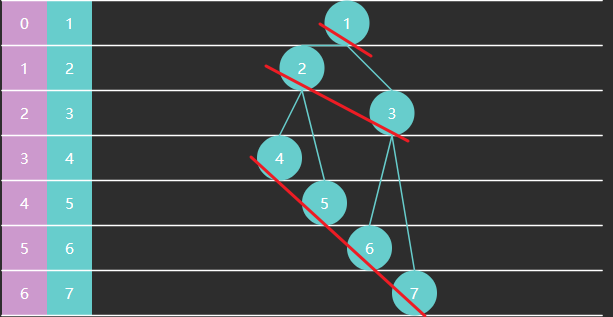
下面看交换次数的推导:设节点高度为 3
| 本层节点数 | 高度 | 下潜最多交换次数(高度-1) | |
|---|---|---|---|
| 4567 这层 | 4 | 1 | 0 |
| 23这层 | 2 | 2 | 1 |
| 1这层 | 1 | 3 | 2 |
每一层的交换次数为: 节点个数 ∗ 此节点交换次数 节点个数*此节点交换次数 节点个数∗此节点交换次数,总的交换次数为
4 ∗ 0 + 2 ∗ 1 + 1 ∗ 2 8 2 ∗ 0 + 8 4 ∗ 1 + 8 8 ∗ 2 8 2 1 ∗ 0 + 8 2 2 ∗ 1 + 8 2 3 ∗ 2 \begin{aligned} & 4 * 0 + 2 * 1 + 1 * 2 \\ & \frac{8}{2}*0 + \frac{8}{4}*1 + \frac{8}{8}*2 \\ & \frac{8}{2^1}*0 + \frac{8}{2^2}*1 + \frac{8}{2^3}*2\\ \end{aligned} 4∗0+2∗1+1∗228∗0+48∗1+88∗2218∗0+228∗1+238∗2
即
∑ i = 1 h ( 2 h 2 i ∗ ( i − 1 ) ) \sum_{i=1}^{h}(\frac{2^h}{2^i}*(i-1)) i=1∑h(2i2h∗(i−1))
在 https://www.wolframalpha.com/ 输入
Sum[\(40)Divide[Power[2,x],Power[2,i]]*\(40)i-1\(41)\(41),{i,1,x}]
推导出
2
h
−
h
−
1
2^h -h -1
2h−h−1
其中
2
h
≈
n
2^h \approx n
2h≈n,
h
≈
log
2
n
h \approx \log_2{n}
h≈log2n,因此有时间复杂度
O
(
n
)
O(n)
O(n)
二叉树
二叉树是这么一种树状结构:每个节点最多有两个孩子,左孩子和右孩子
重要的二叉树结构
- 完全二叉树(complete binary tree)是一种二叉树结构,除最后一层以外,每一层都必须填满,填充时要遵从先左后右
- 平衡二叉树(balance binary tree)是一种二叉树结构,其中每个节点的左右子树高度相差不超过 1
存储
存储方式分为两种
- 定义树节点与左、右孩子引用(TreeNode)
- 使用数组,前面讲堆时用过,若以 0 作为树的根,索引可以通过如下方式计算
- 父 = floor((子 - 1) / 2)
- 左孩子 = 父 * 2 + 1
- 右孩子 = 父 * 2 + 2
遍历
遍历也分为两种
- 广度优先遍历(Breadth-first order):尽可能先访问距离根最近的节点,也称为层序遍历
- 深度优先遍历(Depth-first order):对于二叉树,可以进一步分成三种(要深入到叶子节点)
pre-order 前序遍历,对于每一棵子树,先访问该节点,然后是左子树,最后是右子树in-order 中序遍历,对于每一棵子树,先访问左子树,然后是该节点,最后是右子树post-order 后序遍历,对于每一棵子树,先访问左子树,然后是右子树,最后是该节点
广度优先
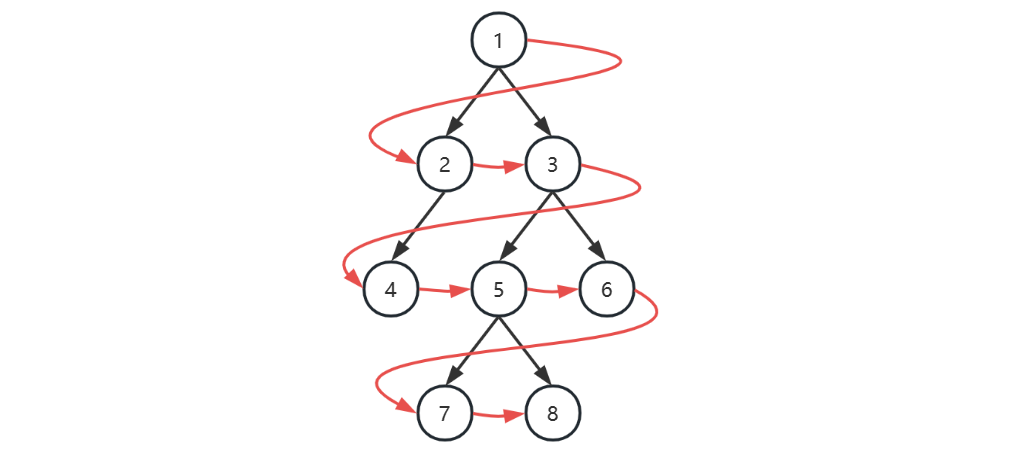
| 本轮开始时队列 | 本轮访问节点 |
|---|---|
| [1] | 1 |
| [2, 3] | 2 |
| [3, 4] | 3 |
| [4, 5, 6] | 4 |
| [5, 6] | 5 |
| [6, 7, 8] | 6 |
| [7, 8] | 7 |
| [8] | 8 |
| [] |
- 初始化,将根节点加入队列
- 循环处理队列中每个节点,直至队列为空
- 每次循环内处理节点后,将它的孩子节点(即下一层的节点)加入队列
注意
以上用队列来层序遍历是针对 TreeNode 这种方式表示的二叉树
对于数组表现的二叉树,则直接遍历数组即可,自然为层序遍历的顺序
深度优先
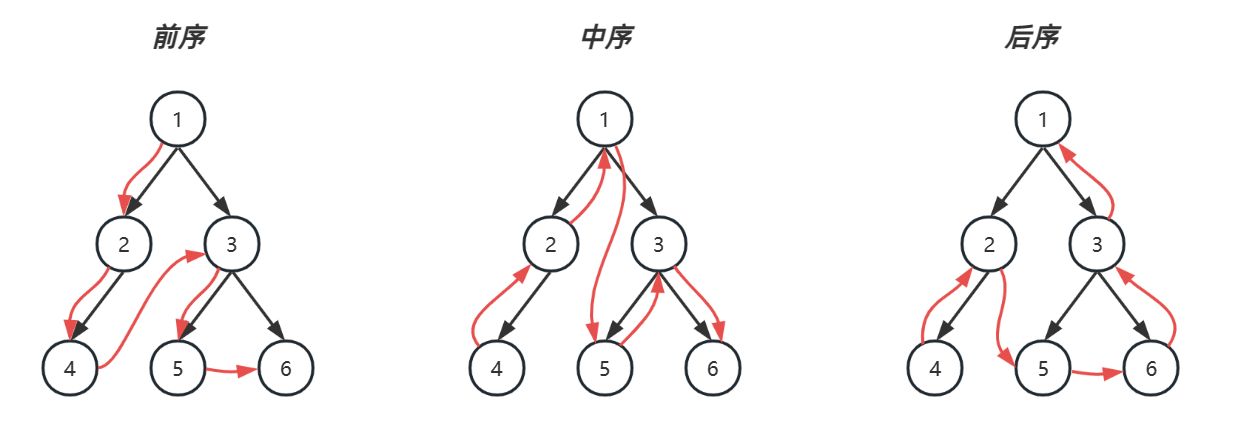
| 栈暂存 | 已处理 | 前序遍历 | 中序遍历 |
|---|---|---|---|
| [1] | 1 ✔️ 左💤 右💤 | 1 | |
| [1, 2] | 2✔️ 左💤 右💤 1✔️ 左💤 右💤 | 2 | |
| [1, 2, 4] | 4✔️ 左✔️ 右✔️ 2✔️ 左💤 右💤 1✔️ 左💤 右💤 | 4 | 4 |
| [1, 2] | 2✔️ 左✔️ 右✔️ 1✔️ 左💤 右💤 | 2 | |
| [1] | 1✔️ 左✔️ 右💤 | 1 | |
| [1, 3] | 3✔️ 左💤 右💤 1✔️ 左✔️ 右💤 | 3 | |
| [1, 3, 5] | 5✔️ 左✔️ 右✔️ 3✔️ 左💤 右💤 1✔️ 左✔️ 右💤 | 5 | 5 |
| [1, 3] | 3✔️ 左✔️ 右💤 1✔️ 左✔️ 右💤 | 3 | |
| [1, 3, 6] | 6✔️ 左✔️ 右✔️ 3✔️ 左✔️ 右💤 1✔️ 左✔️ 右💤 | 6 | 6 |
| [1, 3] | 3✔️ 左✔️ 右✔️ 1✔️ 左✔️ 右💤 | ||
| [1] | 1✔️ 左✔️ 右✔️ | ||
| [] |
递归实现
/**
* <h3>前序遍历</h3>
* @param node 节点
*/
static void preOrder(TreeNode node) {
if (node == null) {
return;
}
System.out.print(node.val + "\t"); // 值
preOrder(node.left); // 左
preOrder(node.right); // 右
}
/**
* <h3>中序遍历</h3>
* @param node 节点
*/
static void inOrder(TreeNode node) {
if (node == null) {
return;
}
inOrder(node.left); // 左
System.out.print(node.val + "\t"); // 值
inOrder(node.right); // 右
}
/**
* <h3>后序遍历</h3>
* @param node 节点
*/
static void postOrder(TreeNode node) {
if (node == null) {
return;
}
postOrder(node.left); // 左
postOrder(node.right); // 右
System.out.print(node.val + "\t"); // 值
}
非递归实现
前序遍历
LinkedListStack<TreeNode> stack = new LinkedListStack<>();
TreeNode curr = root;
while (!stack.isEmpty() || curr != null) {
if (curr != null) {
stack.push(curr);
System.out.println(curr);
curr = curr.left;
} else {
TreeNode pop = stack.pop();
curr = pop.right;
}
}
中序遍历
LinkedListStack<TreeNode> stack = new LinkedListStack<>();
TreeNode curr = root;
while (!stack.isEmpty() || curr != null) {
if (curr != null) {
stack.push(curr);
curr = curr.left;
} else {
TreeNode pop = stack.pop();
System.out.println(pop);
curr = pop.right;
}
}
后序遍历
LinkedListStack<TreeNode> stack = new LinkedListStack<>();
TreeNode curr = root;
TreeNode pop = null;
while (!stack.isEmpty() || curr != null) {
if (curr != null) {
stack.push(curr);
curr = curr.left;
} else {
TreeNode peek = stack.peek();
if (peek.right == null || peek.right == pop) {
pop = stack.pop();
System.out.println(pop);
} else {
curr = peek.right;
}
}
}
对于后序遍历,向回走时,需要处理完右子树才能 pop 出栈。如何知道右子树处理完成呢?
-
如果栈顶元素的 r i g h t ≡ n u l l right \equiv null right≡null 表示没啥可处理的,可以出栈
-
如果栈顶元素的 r i g h t ≠ n u l l right \neq null right=null,
- 那么使用 lastPop 记录最近出栈的节点,即表示从这个节点向回走
- 如果栈顶元素的 r i g h t = = l a s t P o p right==lastPop right==lastPop 此时应当出栈
对于前、中两种遍历,实际以上代码从右子树向回走时,并未走完全程(stack 提前出栈了)后序遍历以上代码是走完全程了
统一写法
下面是一种统一的写法,依据后序遍历修改
LinkedList<TreeNode> stack = new LinkedList<>();
TreeNode curr = root; // 代表当前节点
TreeNode pop = null; // 最近一次弹栈的元素
while (curr != null || !stack.isEmpty()) {
if (curr != null) {
colorPrintln("前: " + curr.val, 31);
stack.push(curr); // 压入栈,为了记住回来的路
curr = curr.left;
} else {
TreeNode peek = stack.peek();
// 右子树可以不处理, 对中序来说, 要在右子树处理之前打印
if (peek.right == null) {
colorPrintln("中: " + peek.val, 36);
pop = stack.pop();
colorPrintln("后: " + pop.val, 34);
}
// 右子树处理完成, 对中序来说, 无需打印
else if (peek.right == pop) {
pop = stack.pop();
colorPrintln("后: " + pop.val, 34);
}
// 右子树待处理, 对中序来说, 要在右子树处理之前打印
else {
colorPrintln("中: " + peek.val, 36);
curr = peek.right;
}
}
}
public static void colorPrintln(String origin, int color) {
System.out.printf("\033[%dm%s\033[0m%n", color, origin);
}
一张图演示三种遍历
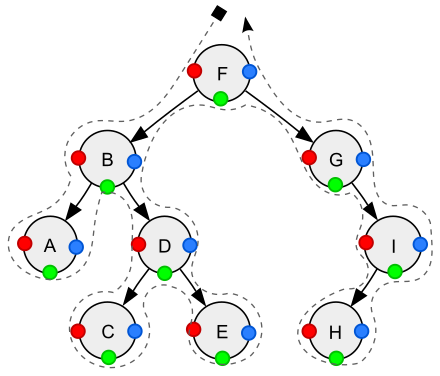
- 红色:前序遍历顺序
- 绿色:中序遍历顺序
- 蓝色:后续遍历顺序


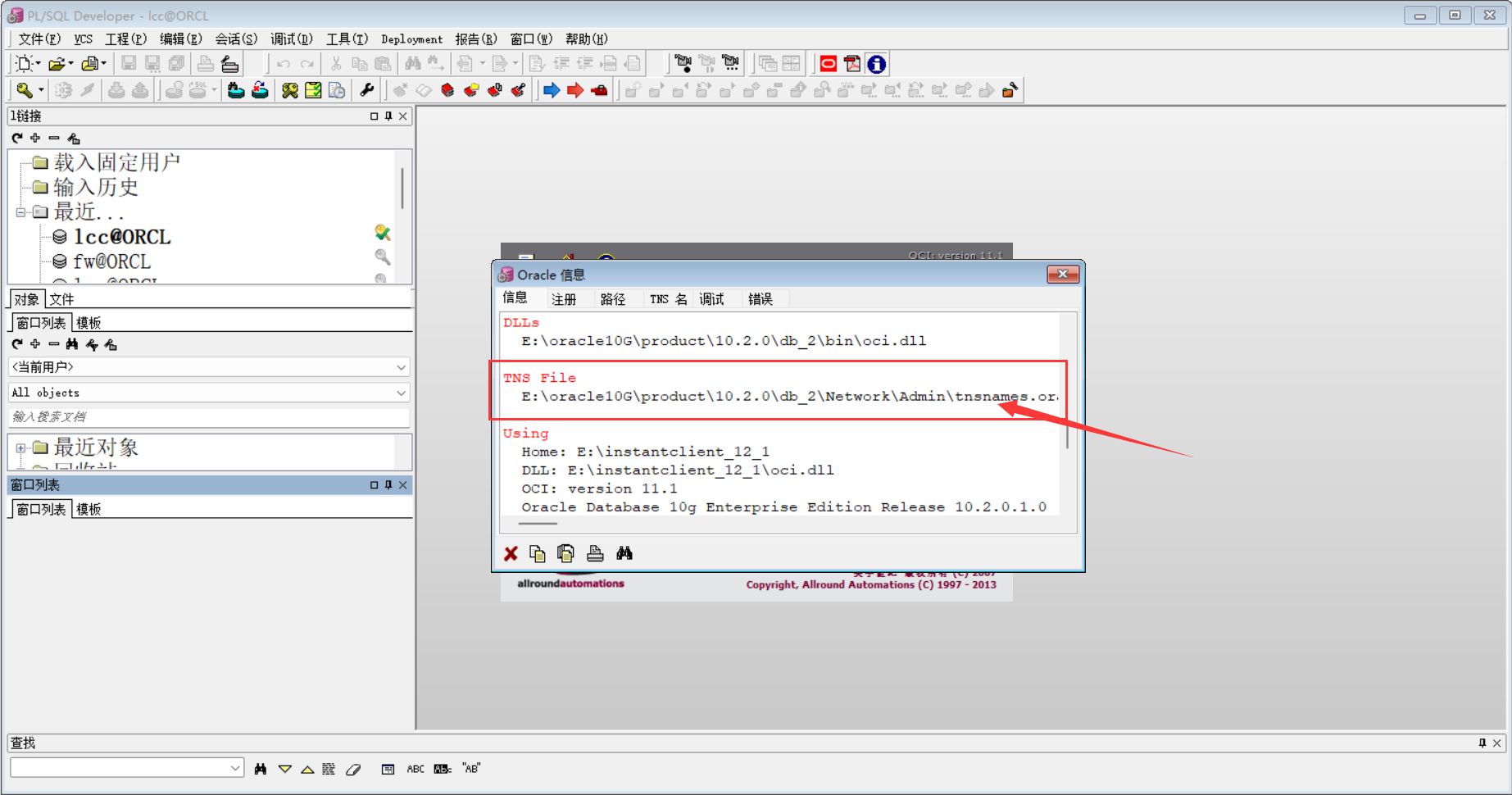


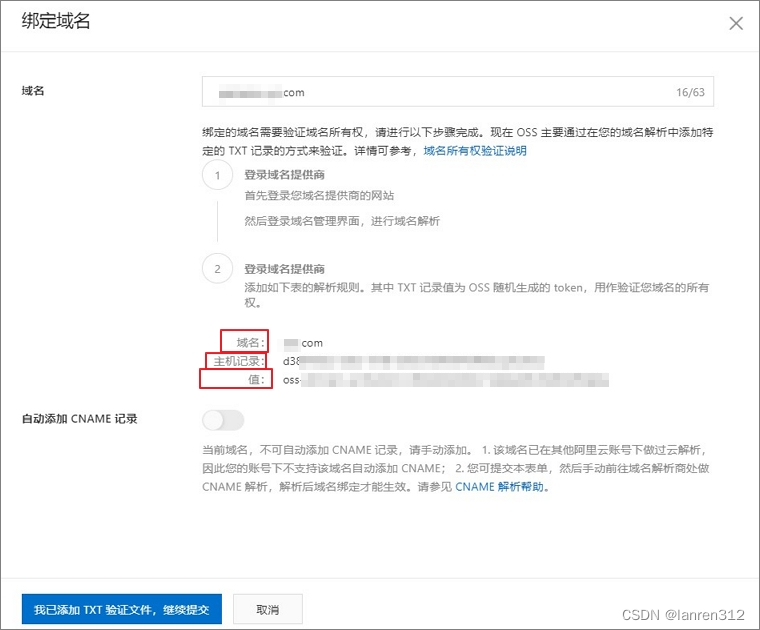
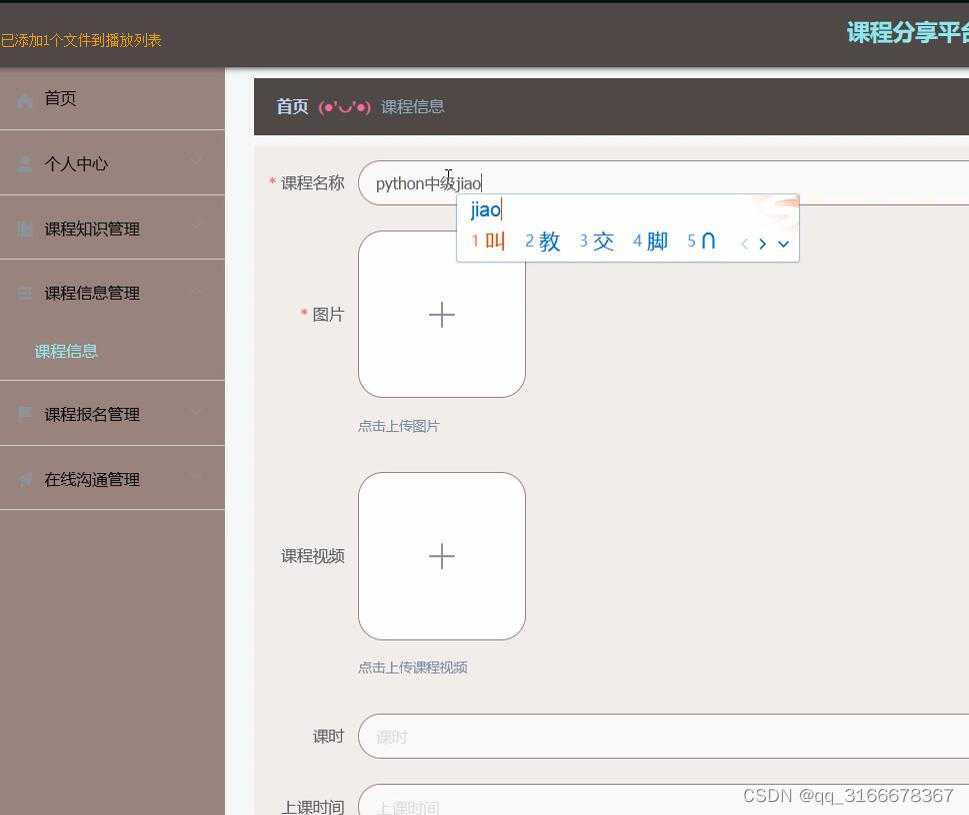



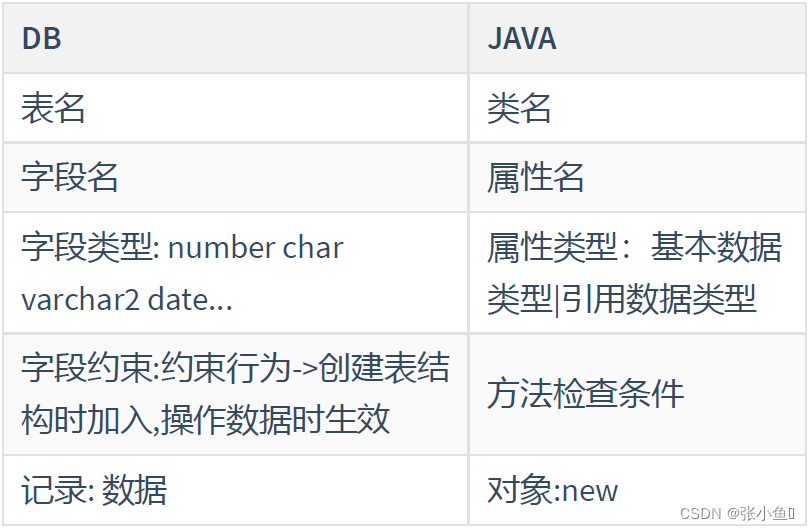
![[比赛简介]Predict Student Performance from Game Play](https://img-blog.csdnimg.cn/bd3f7b2f44e348ad8659b82c2911abca.png)
